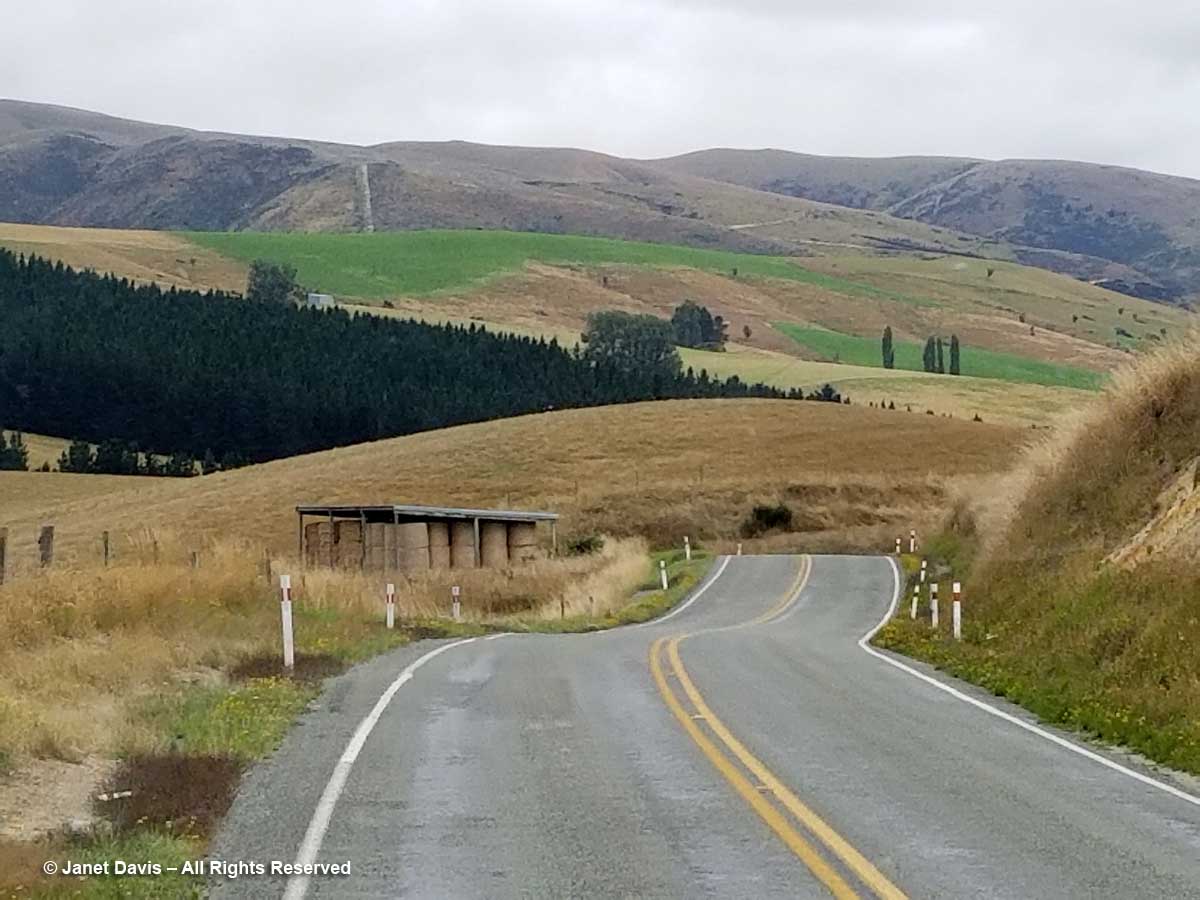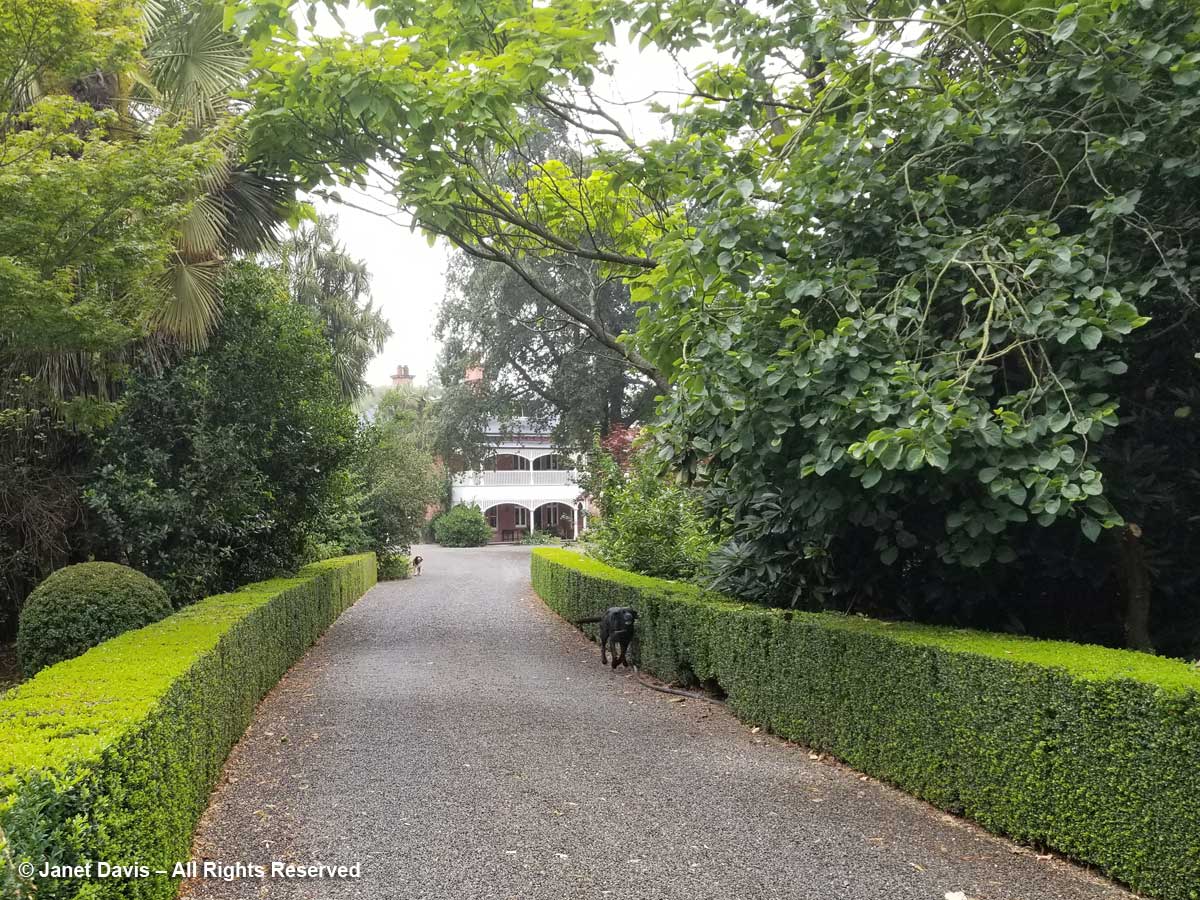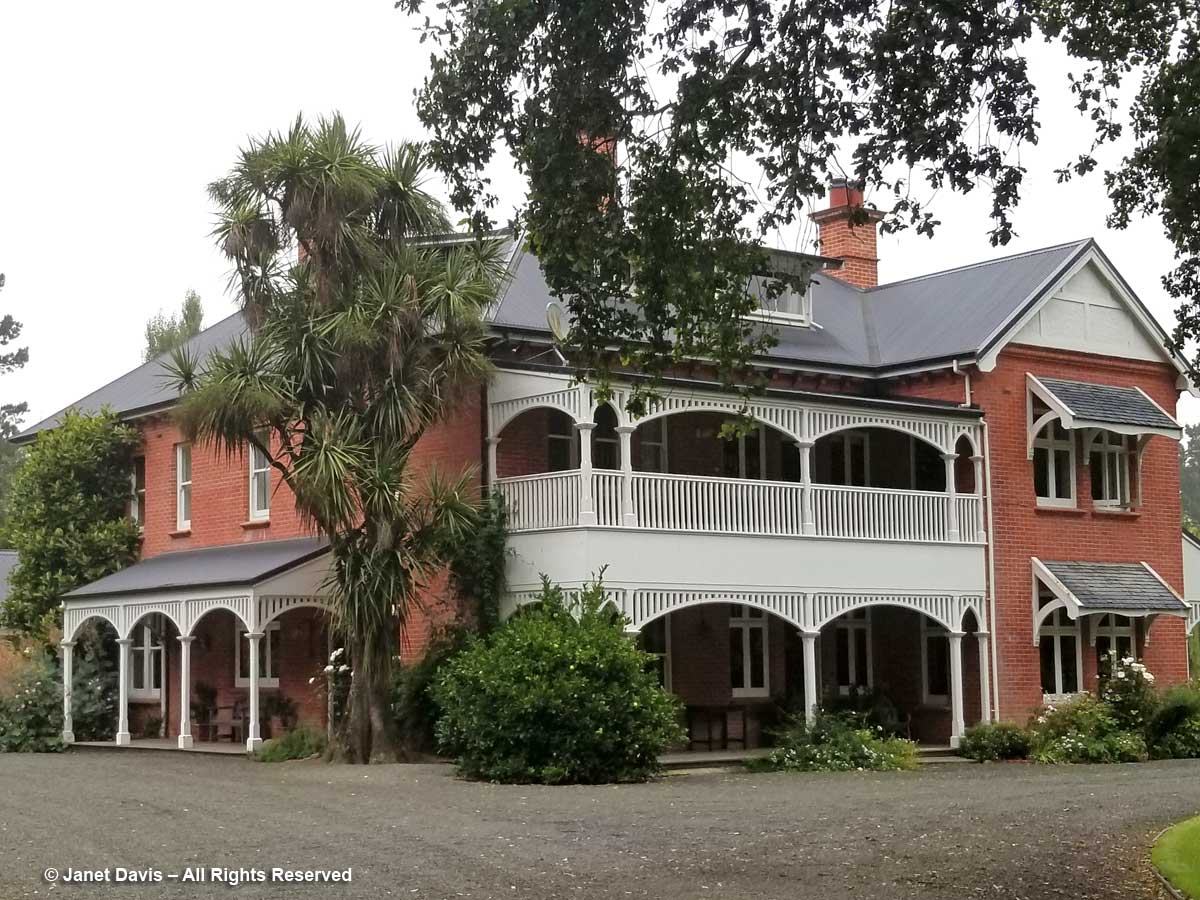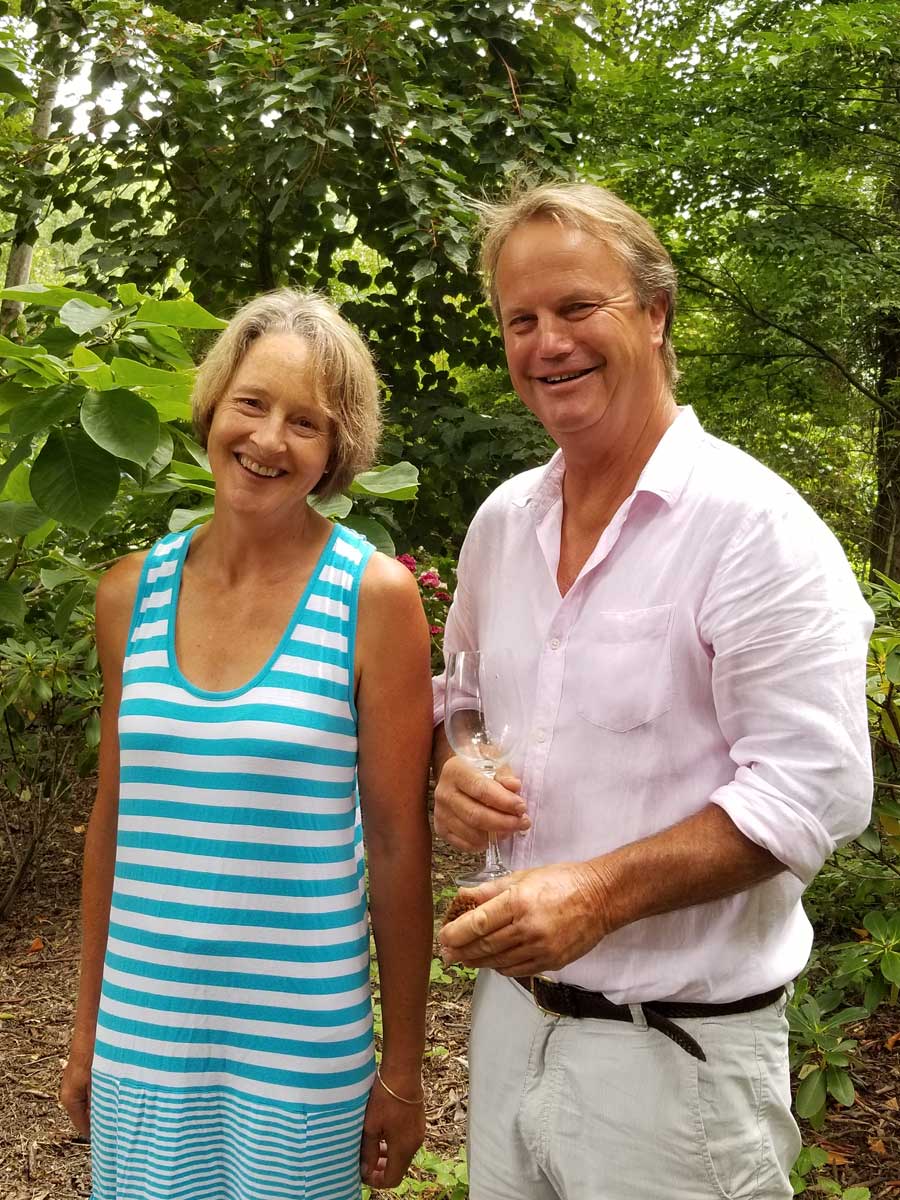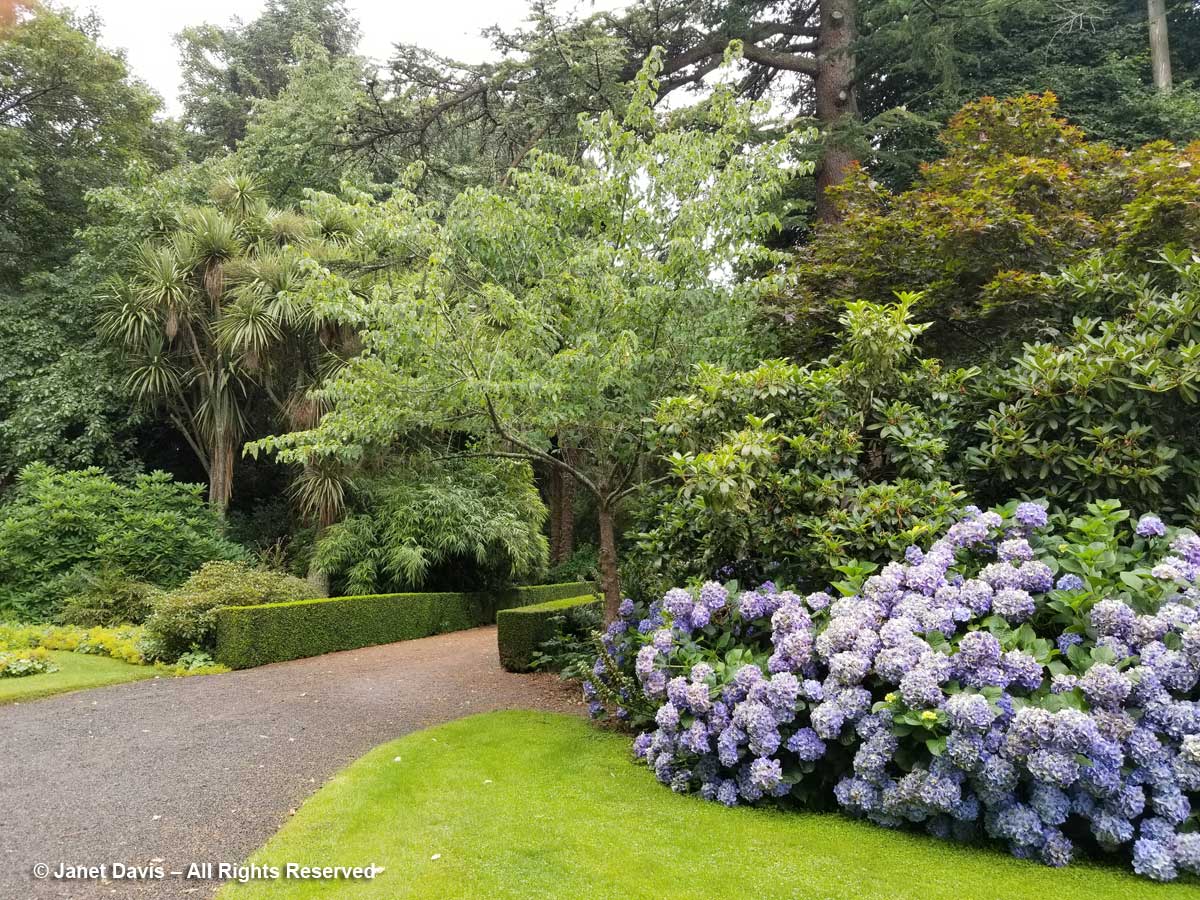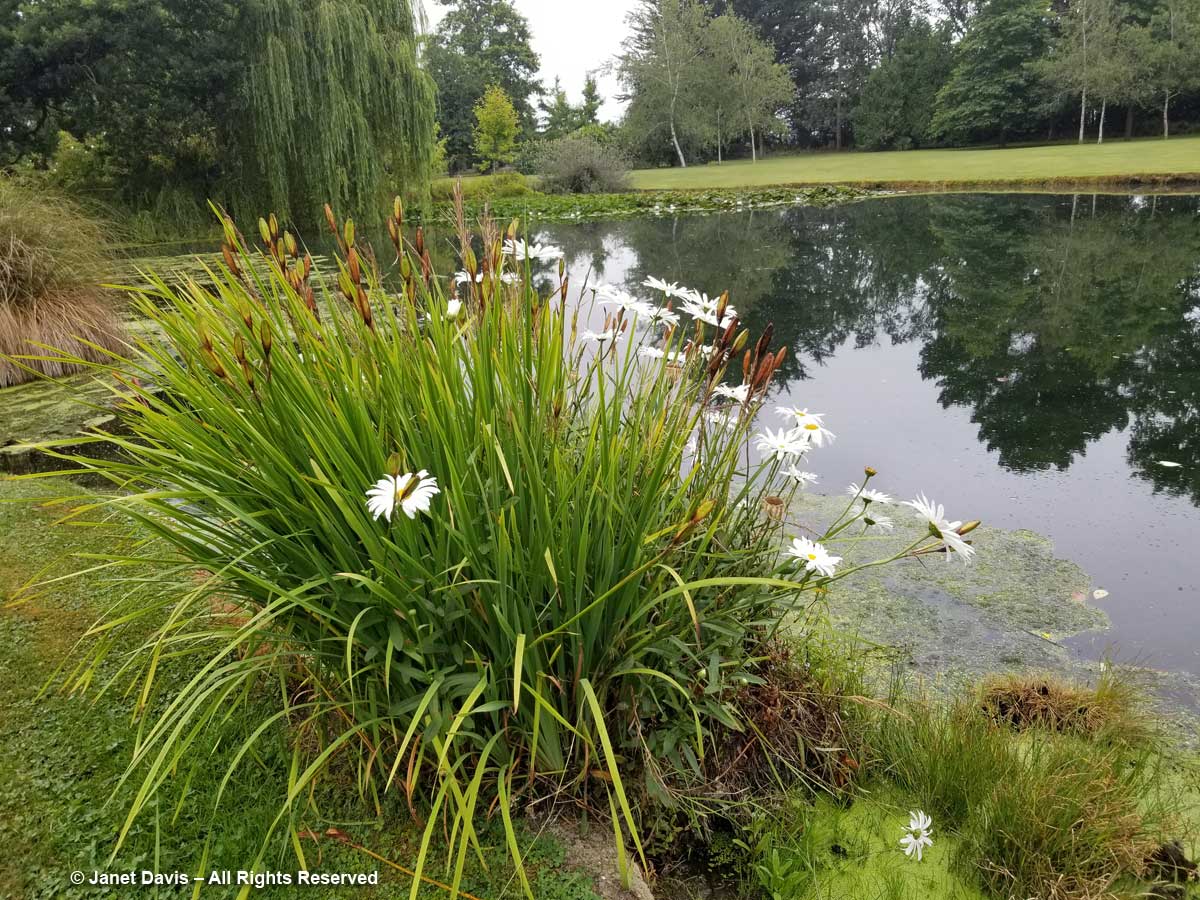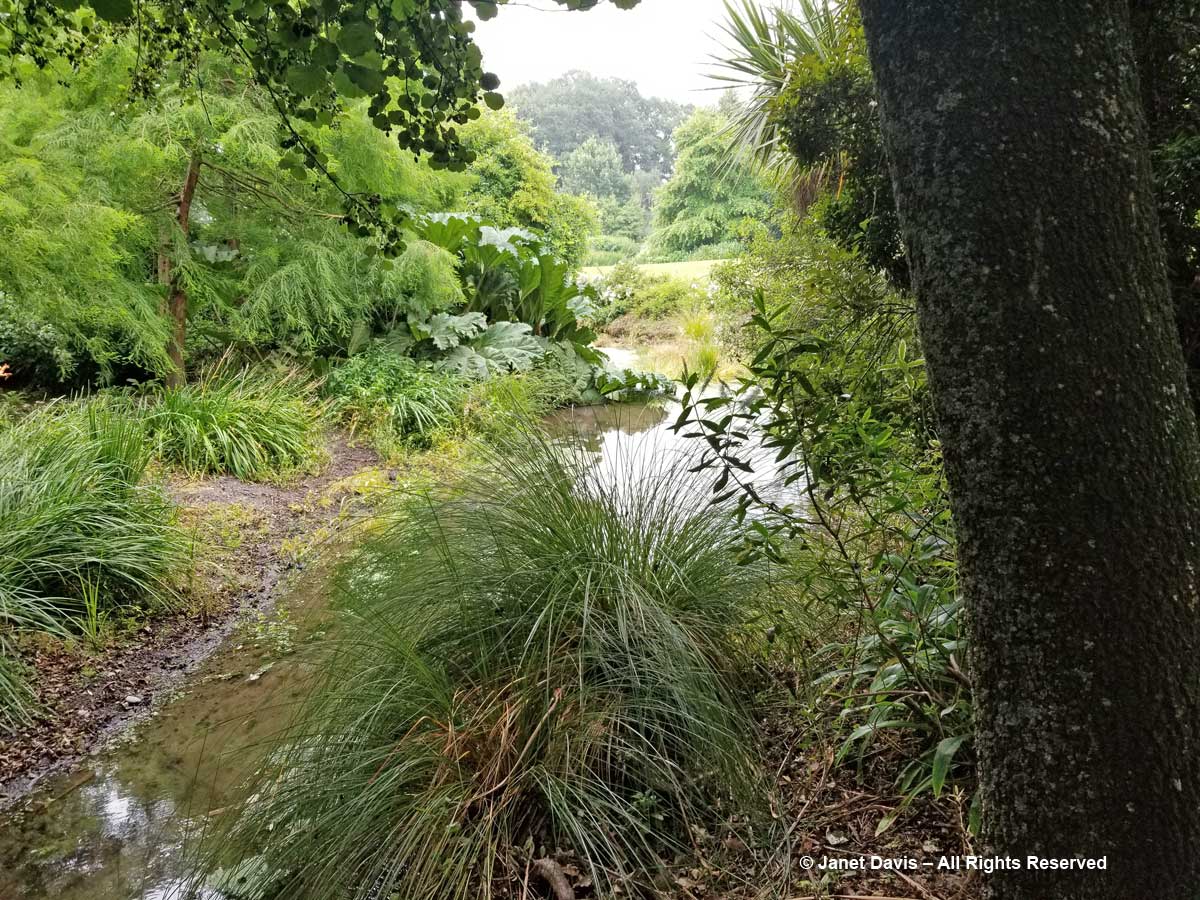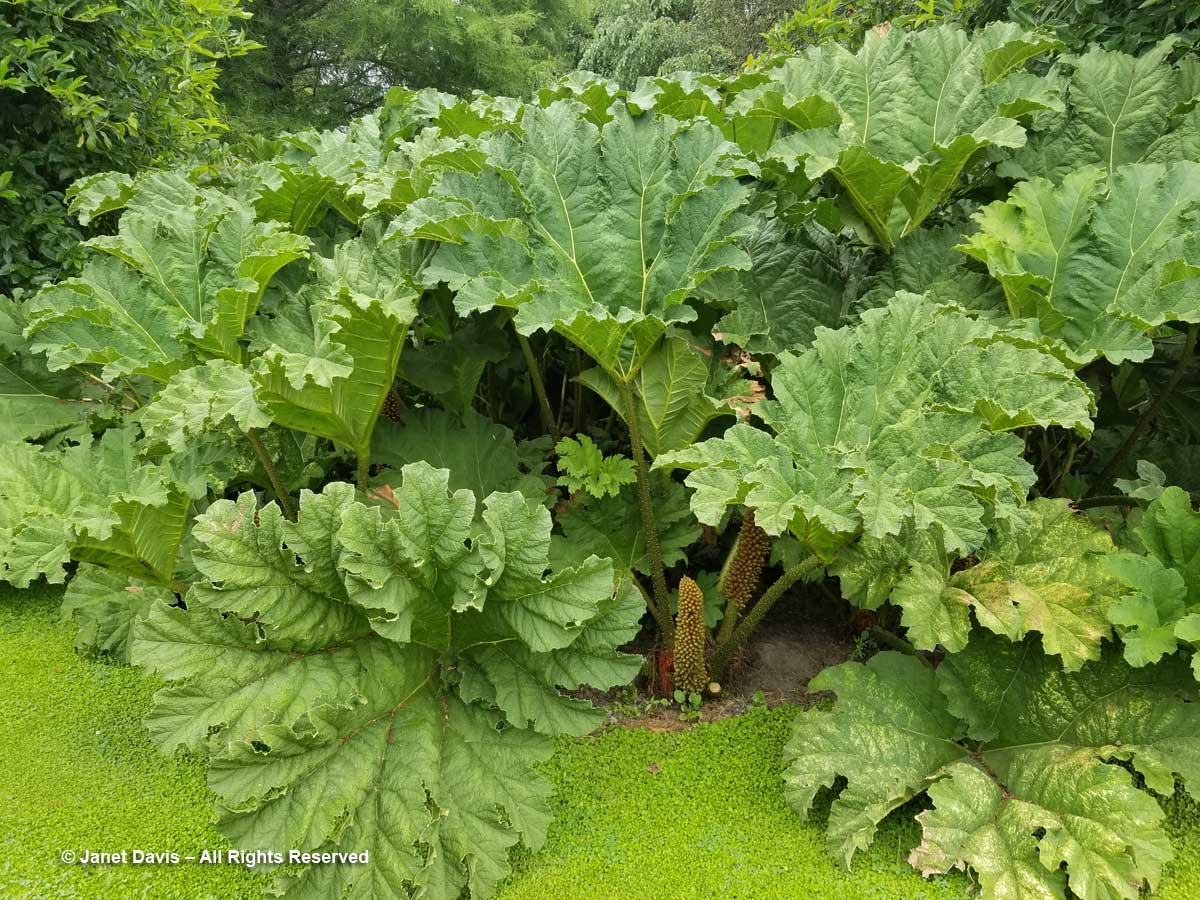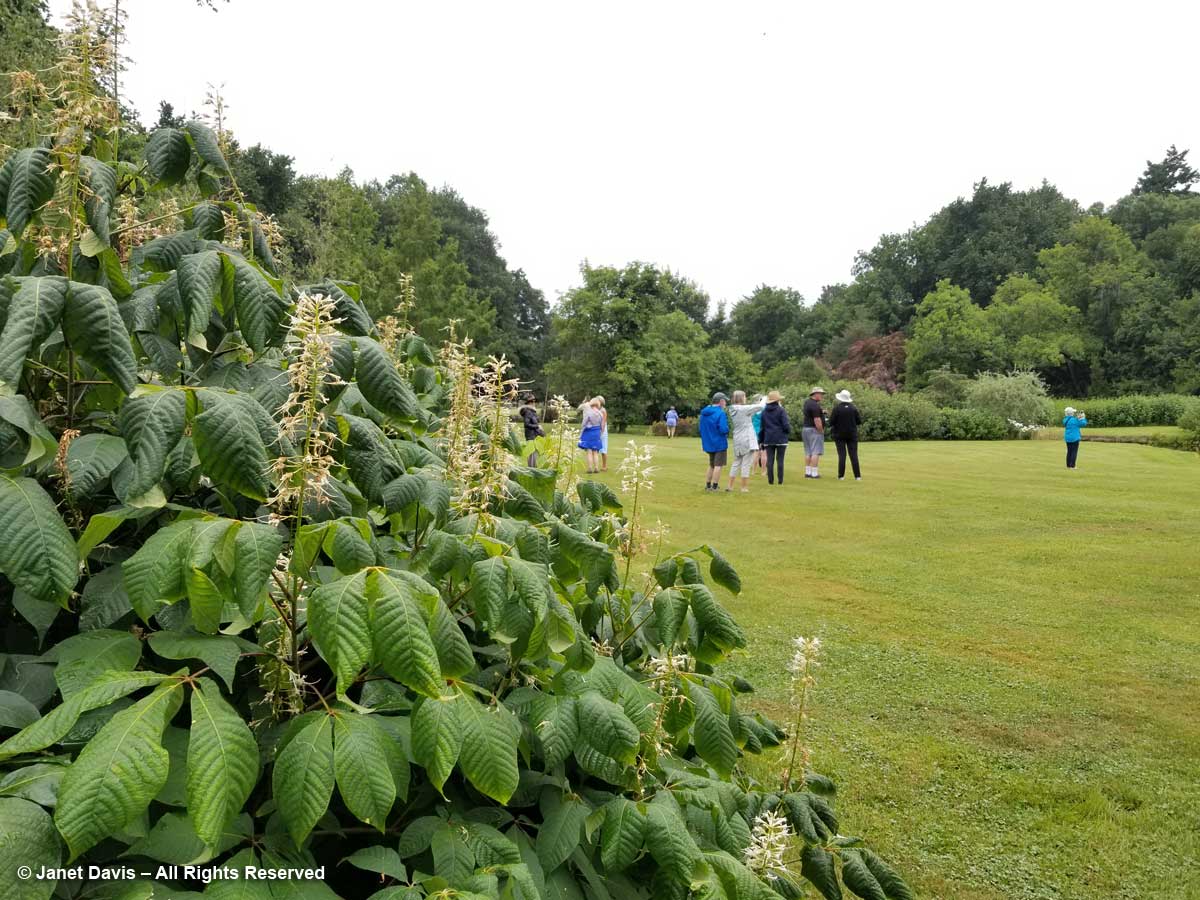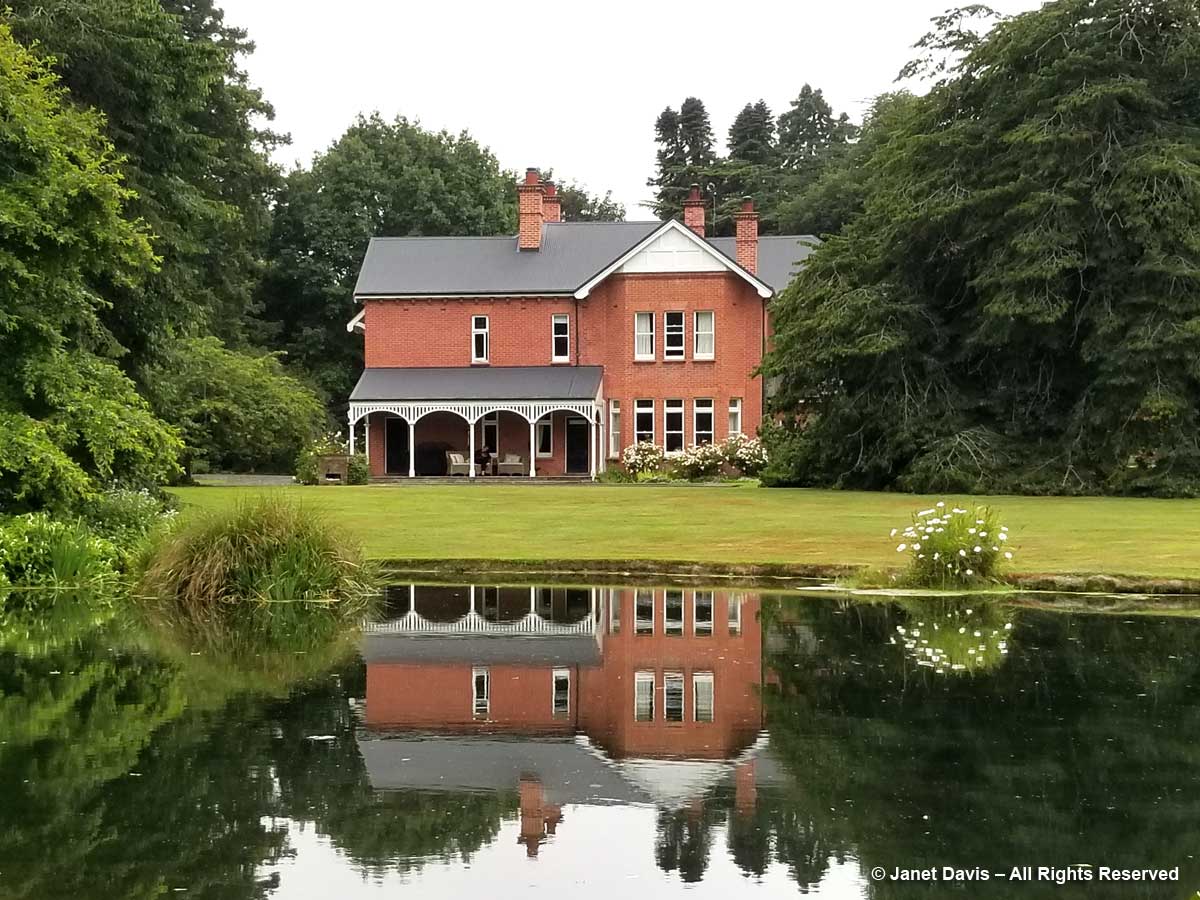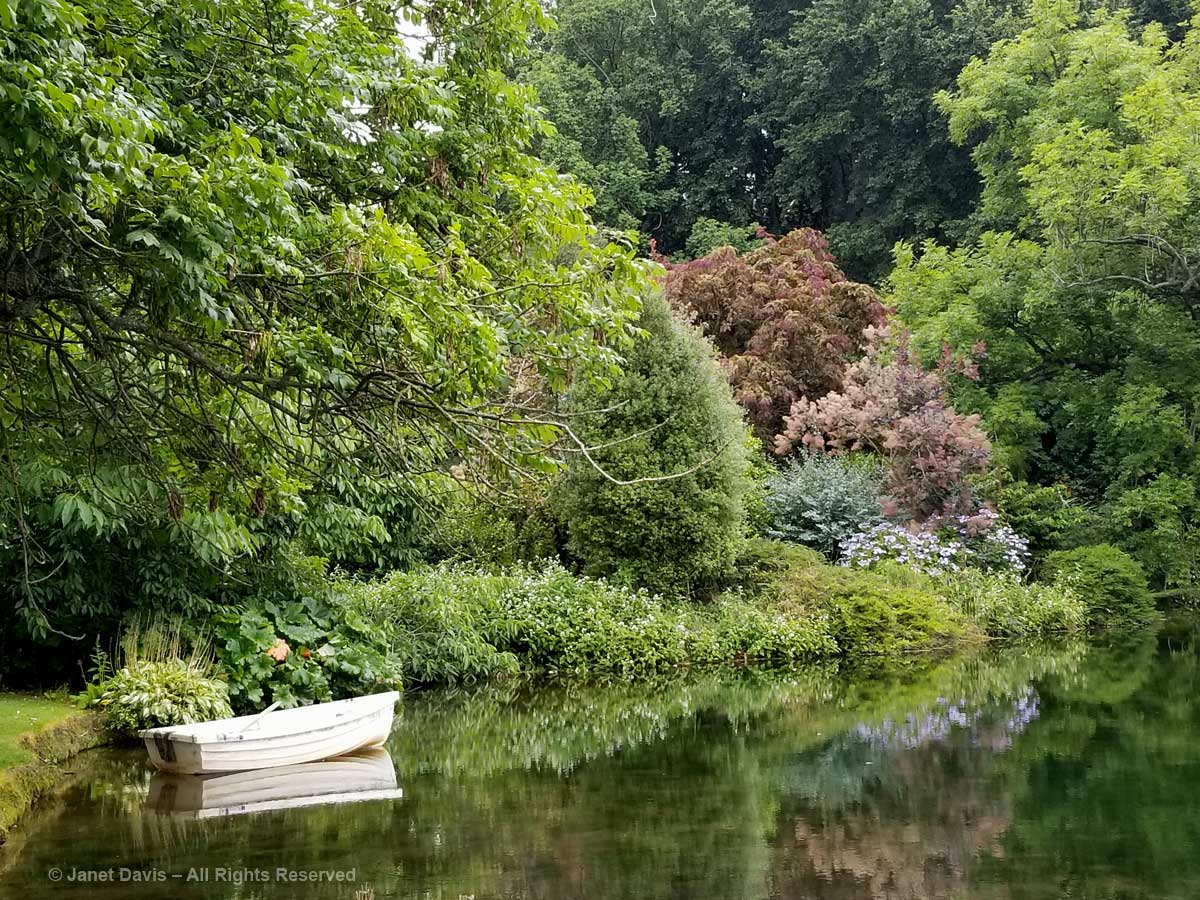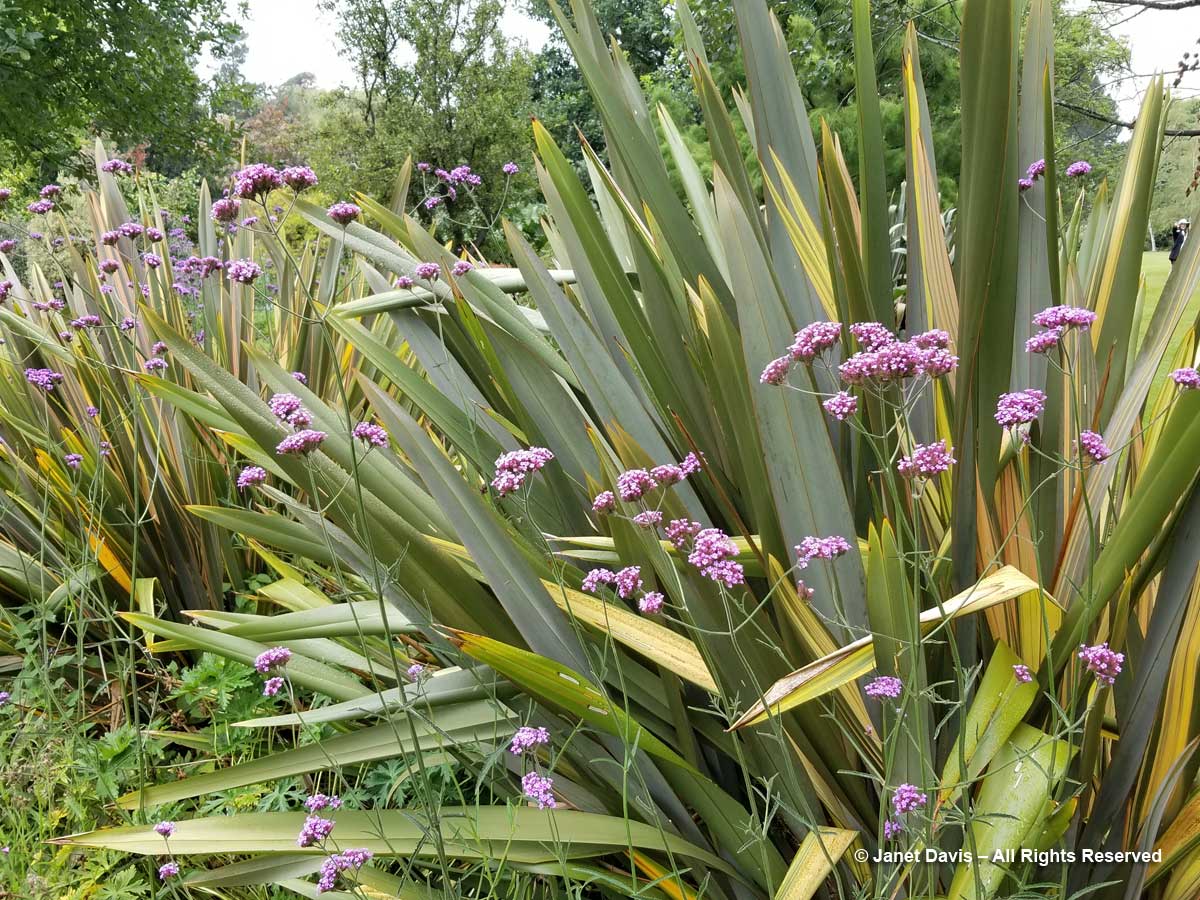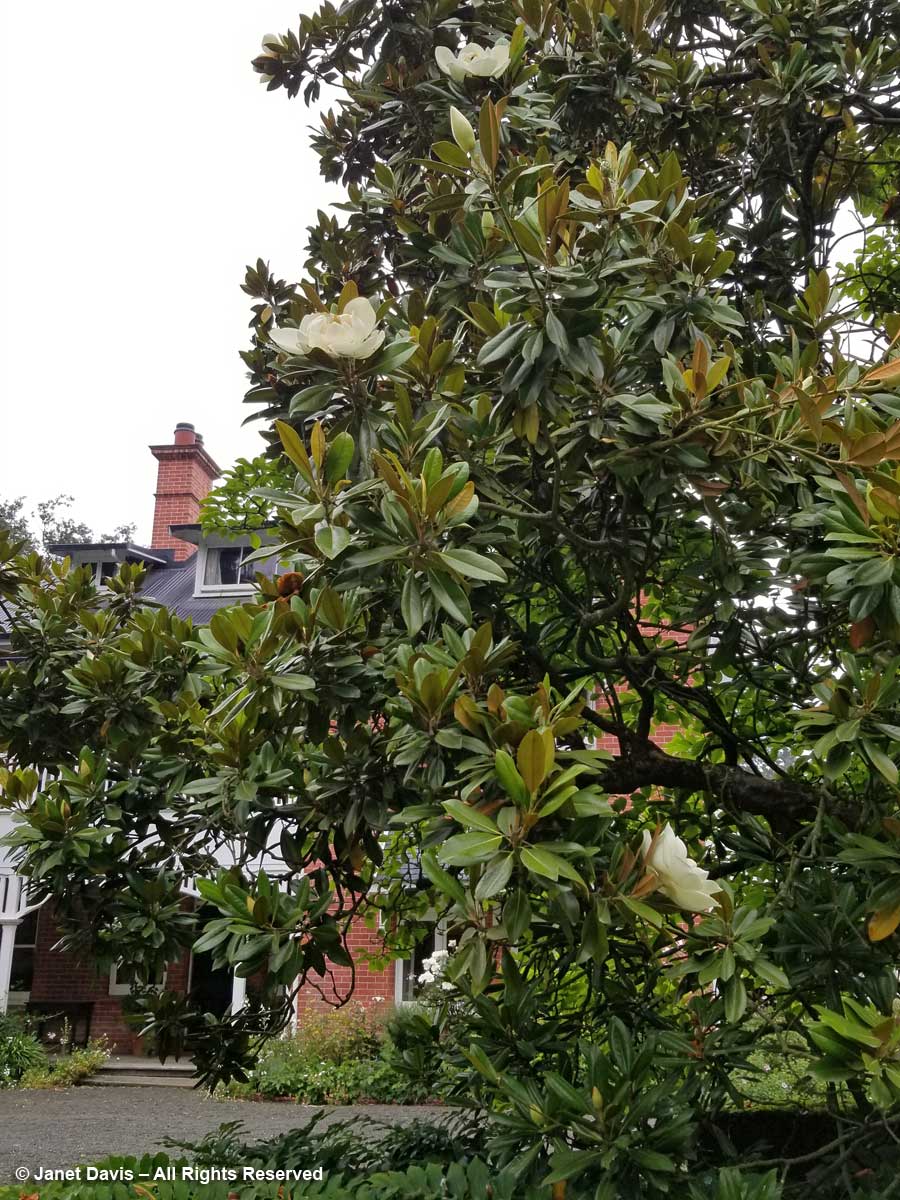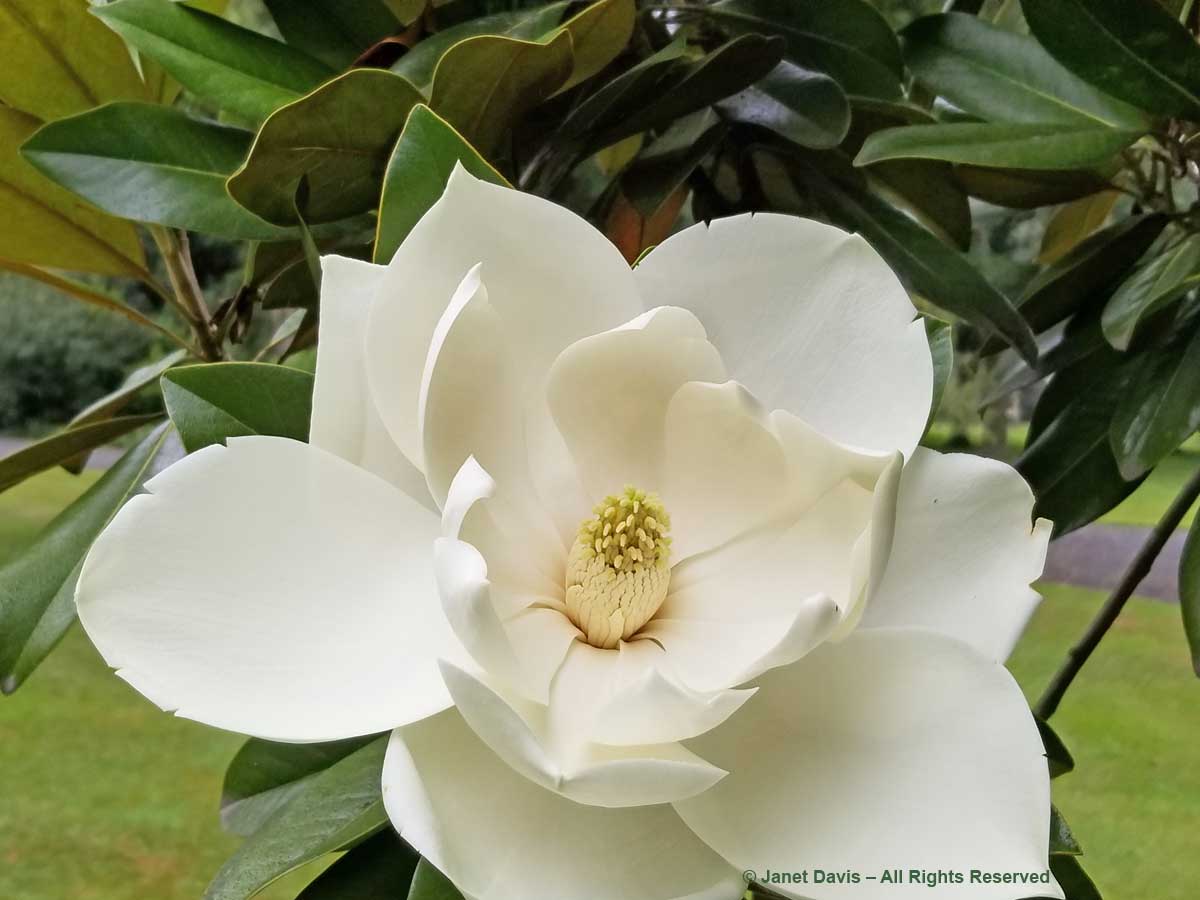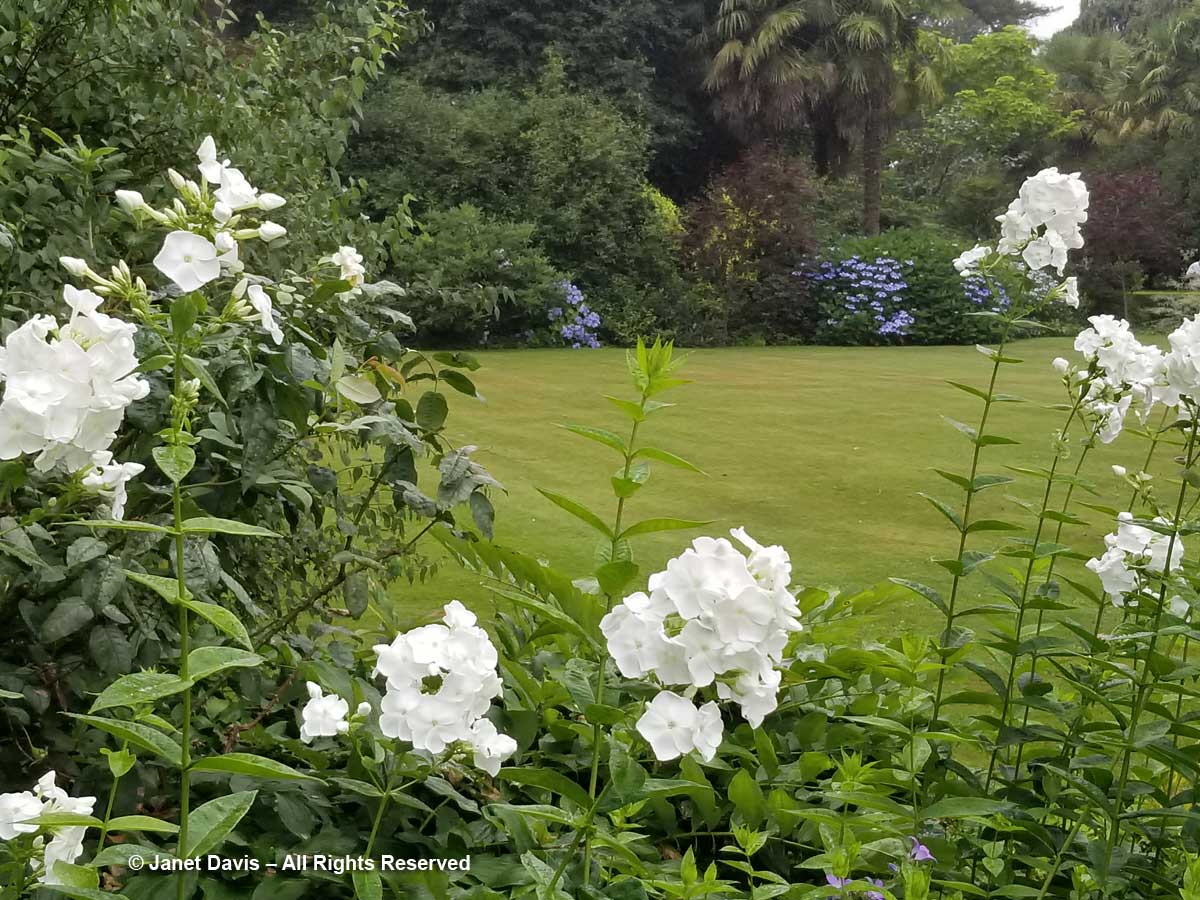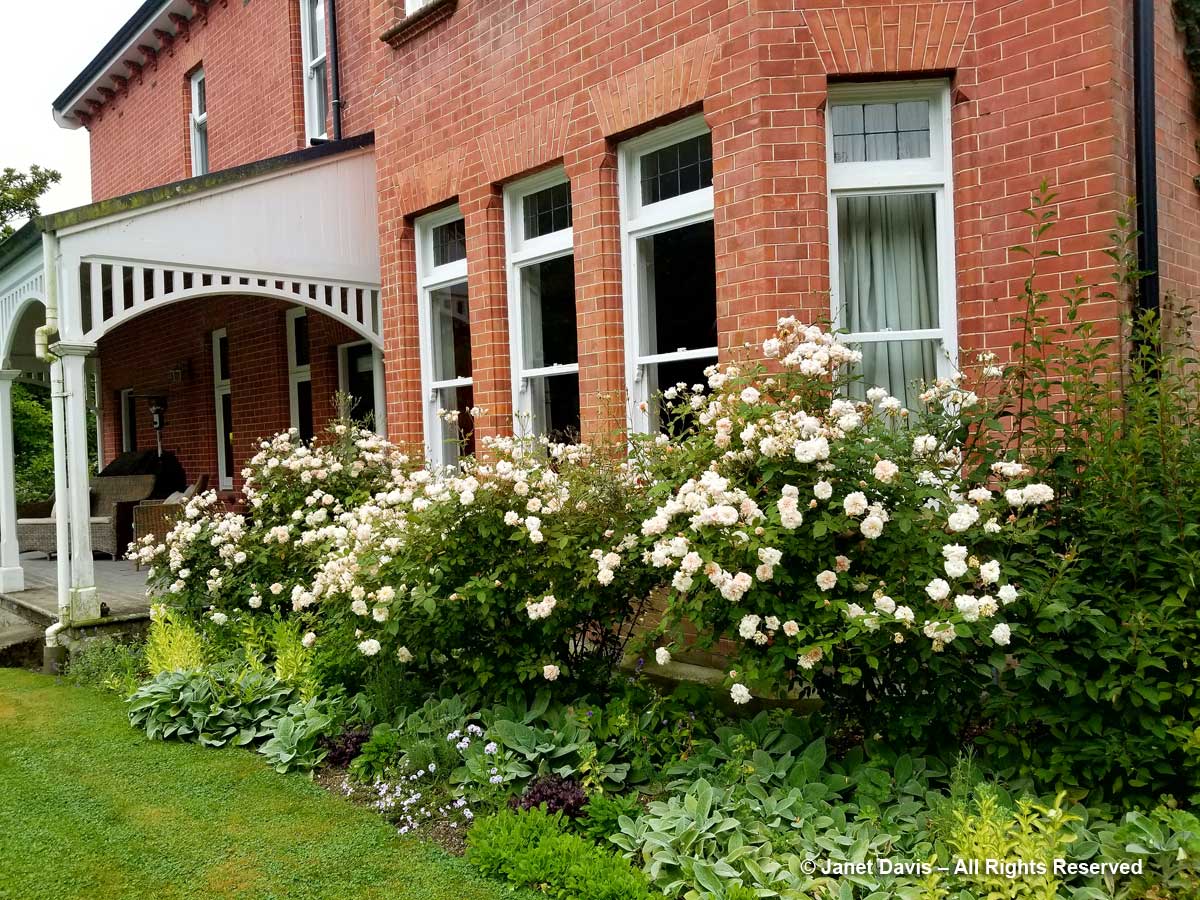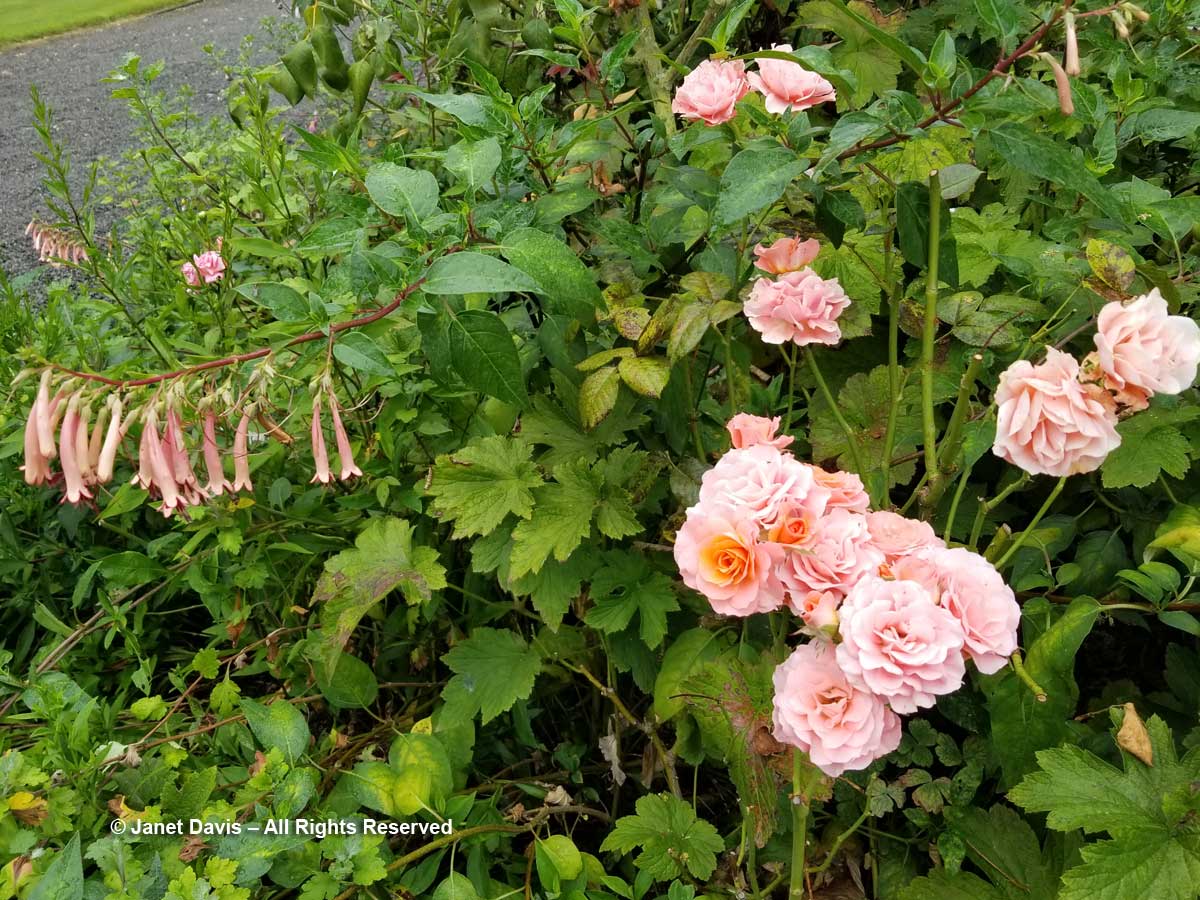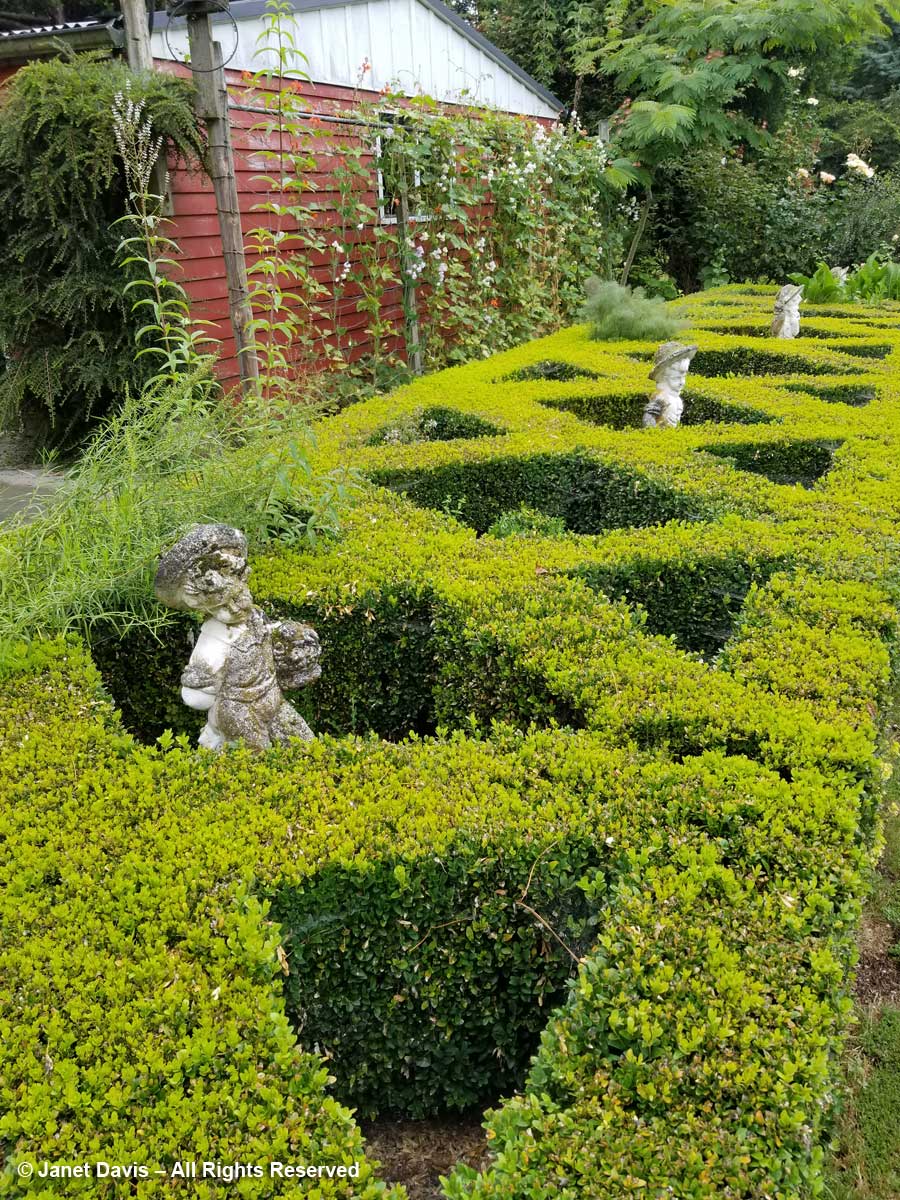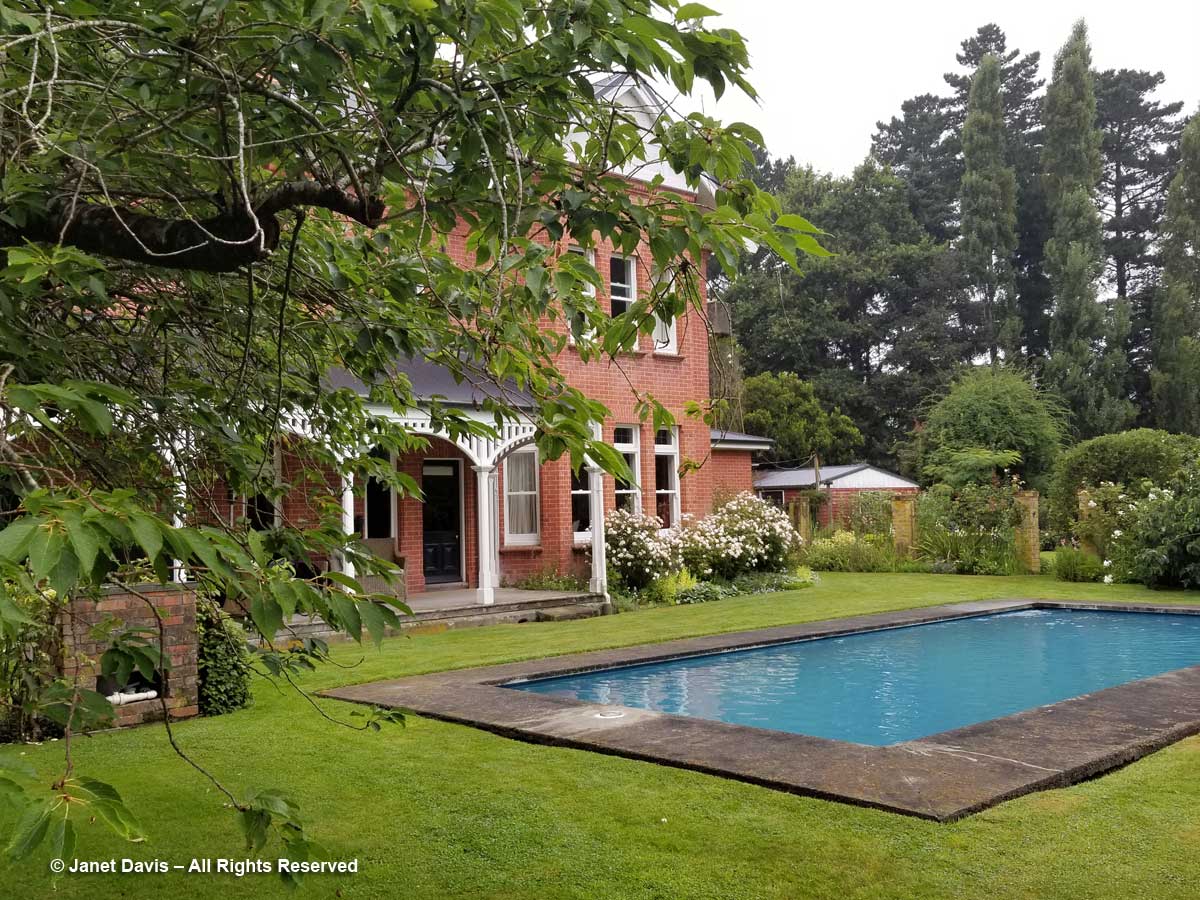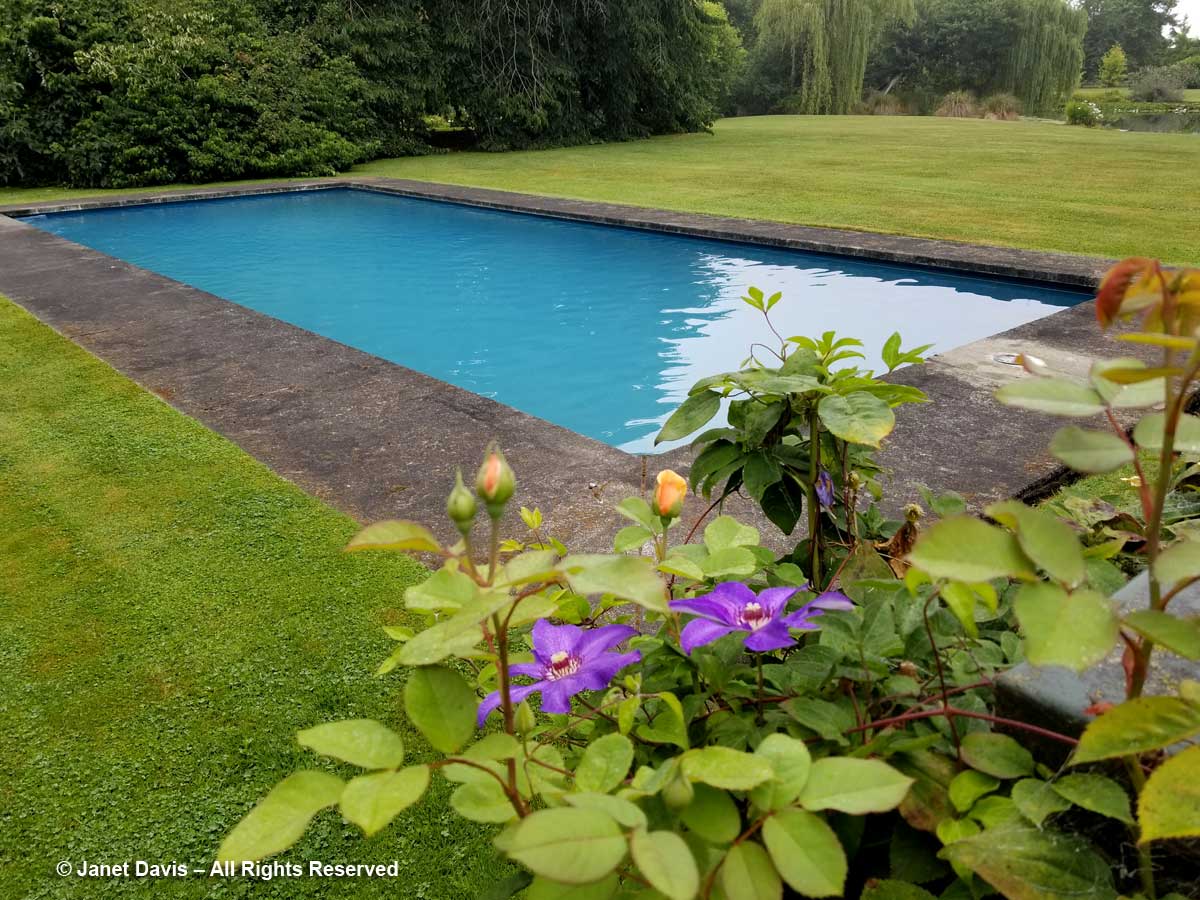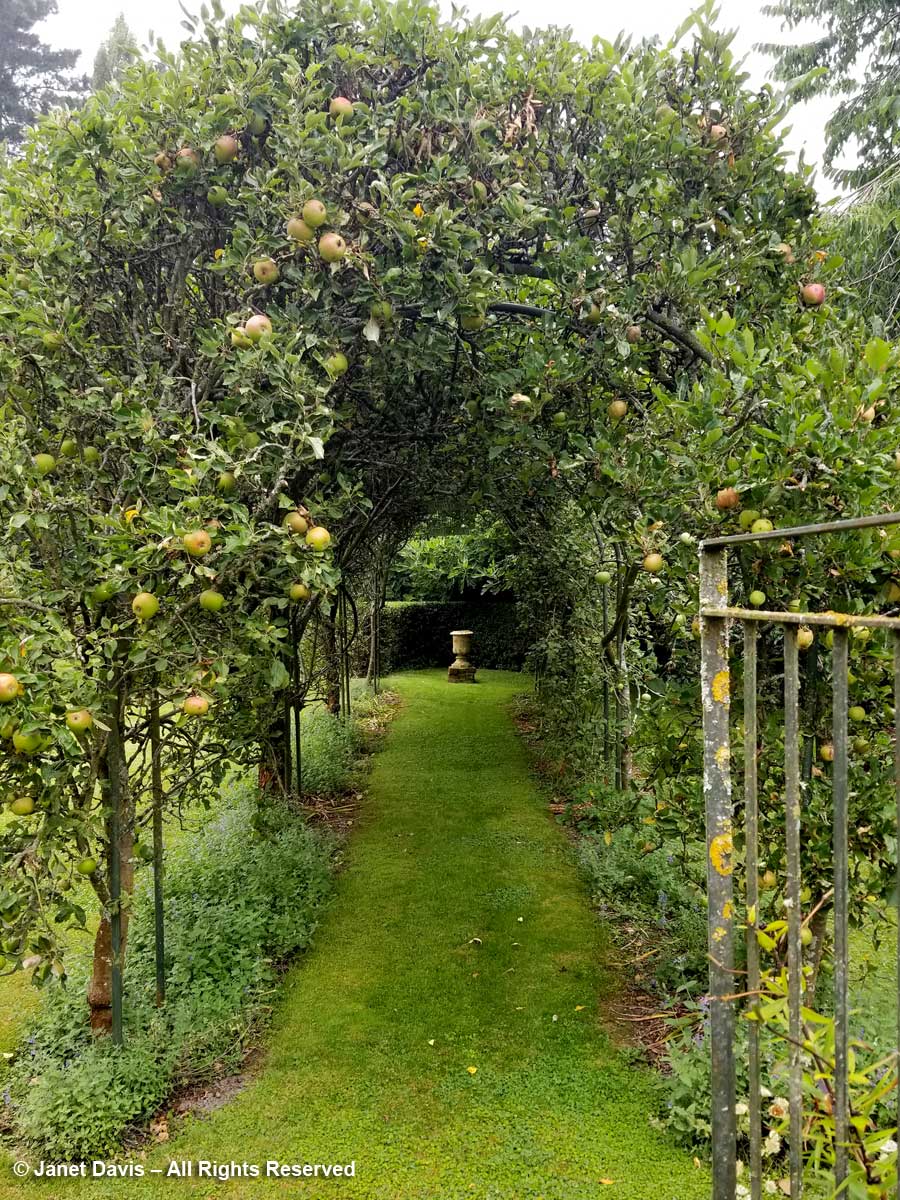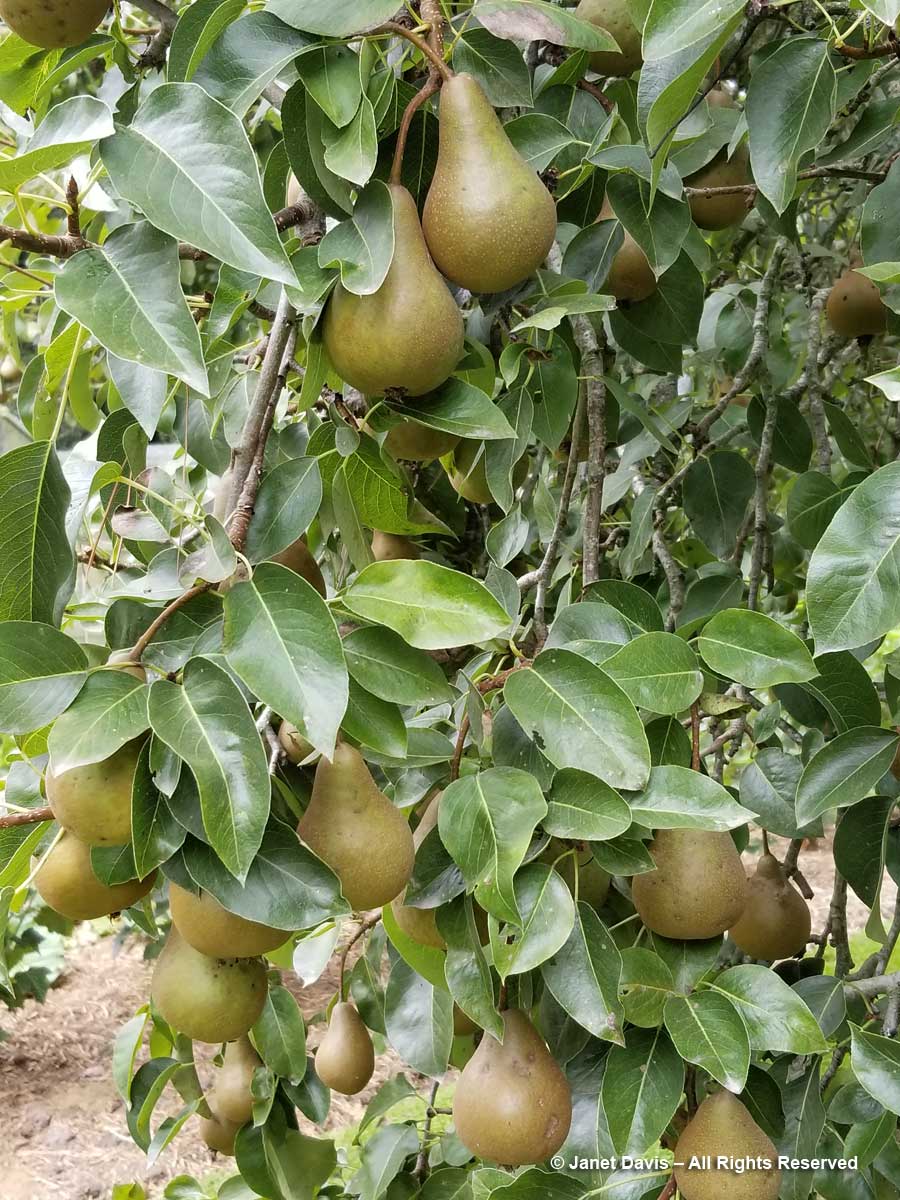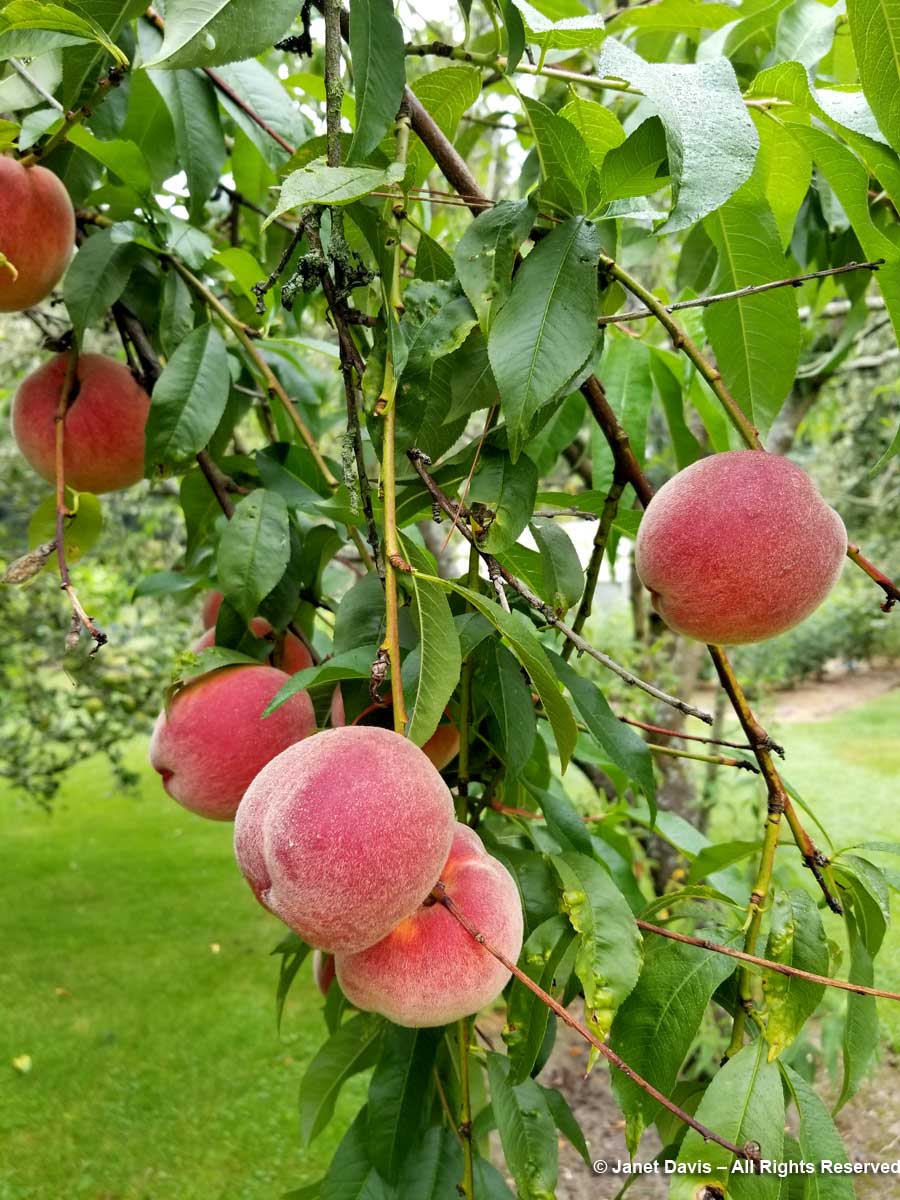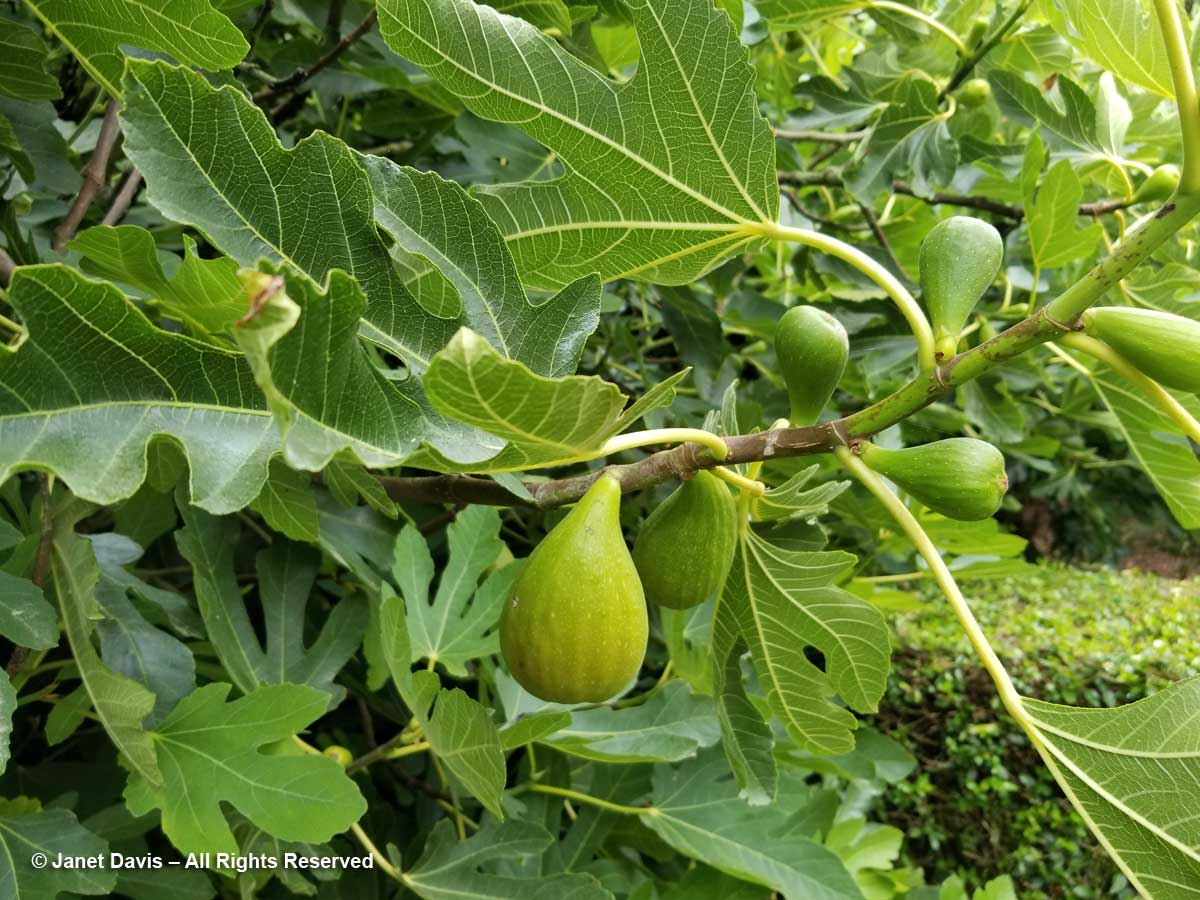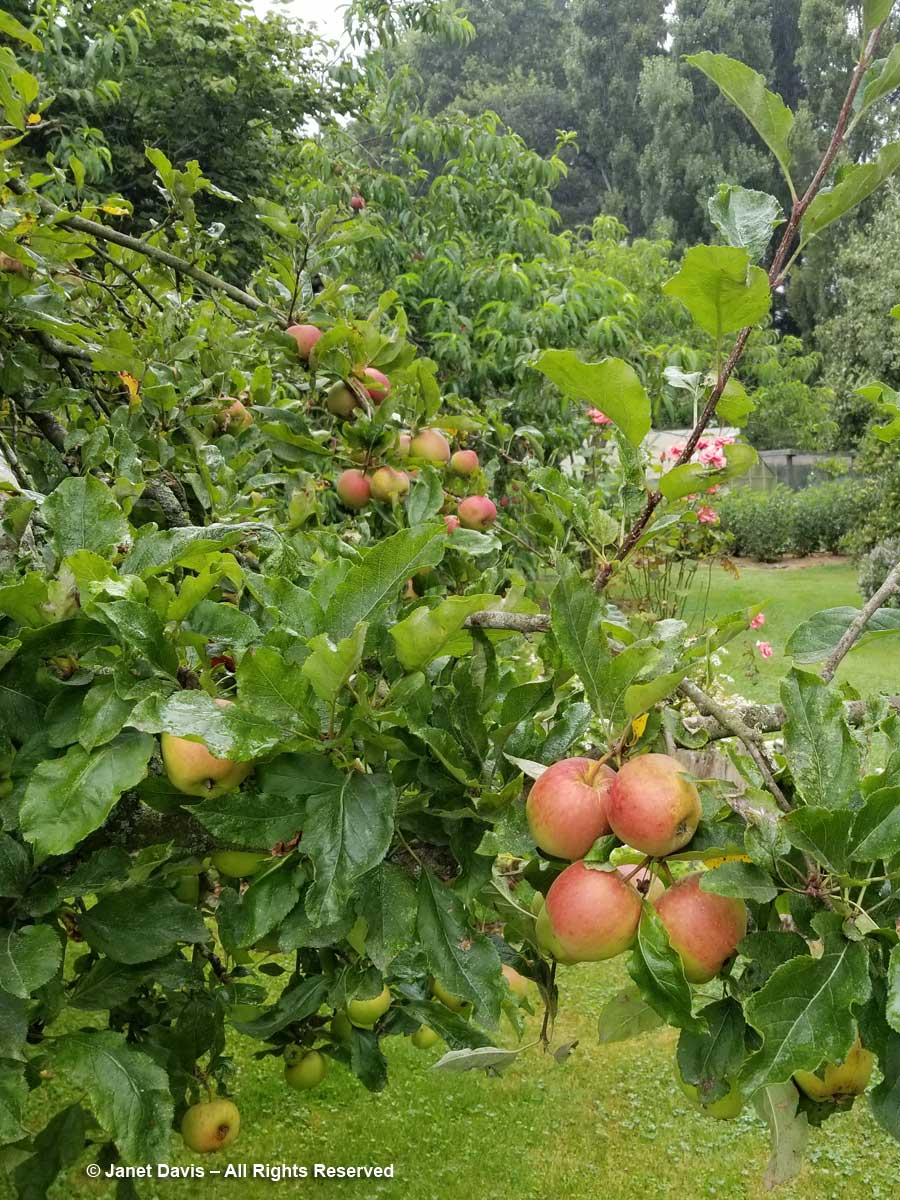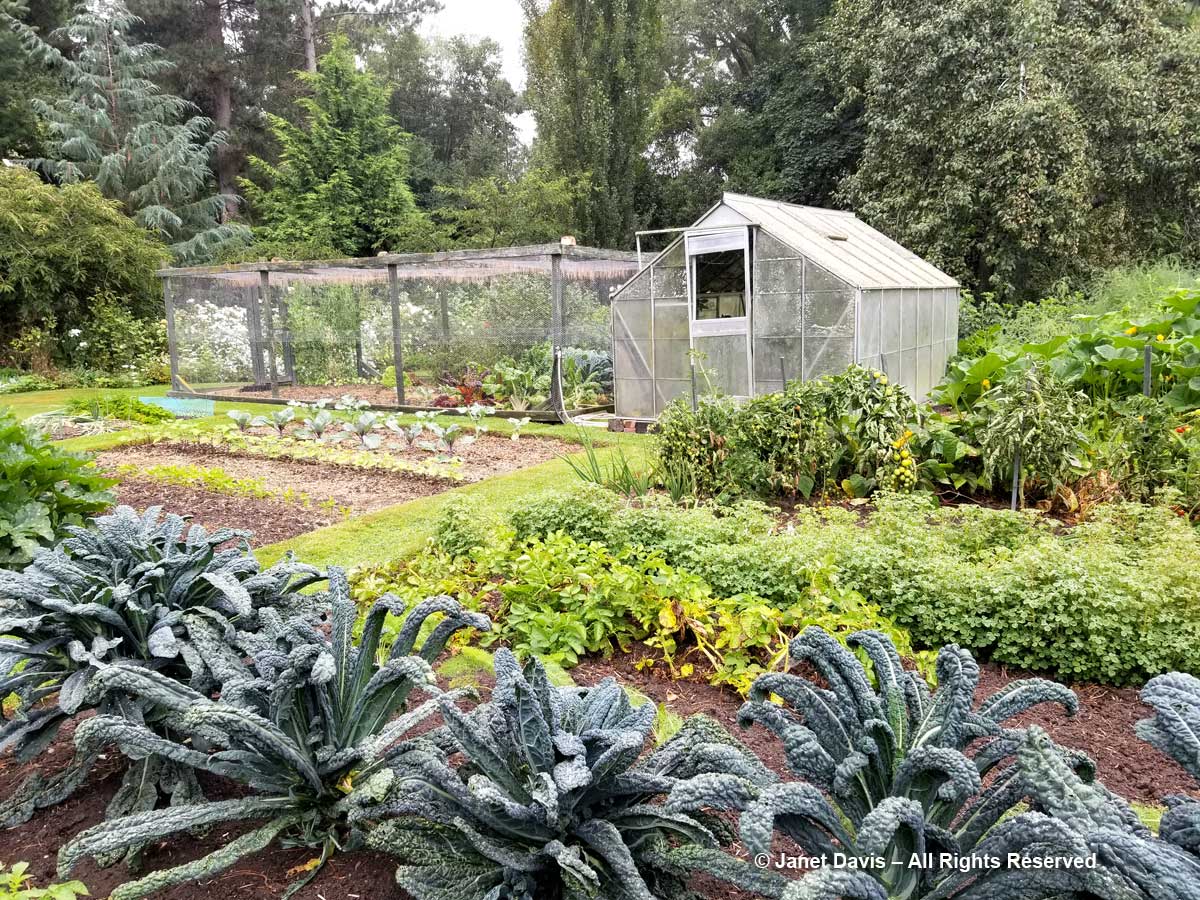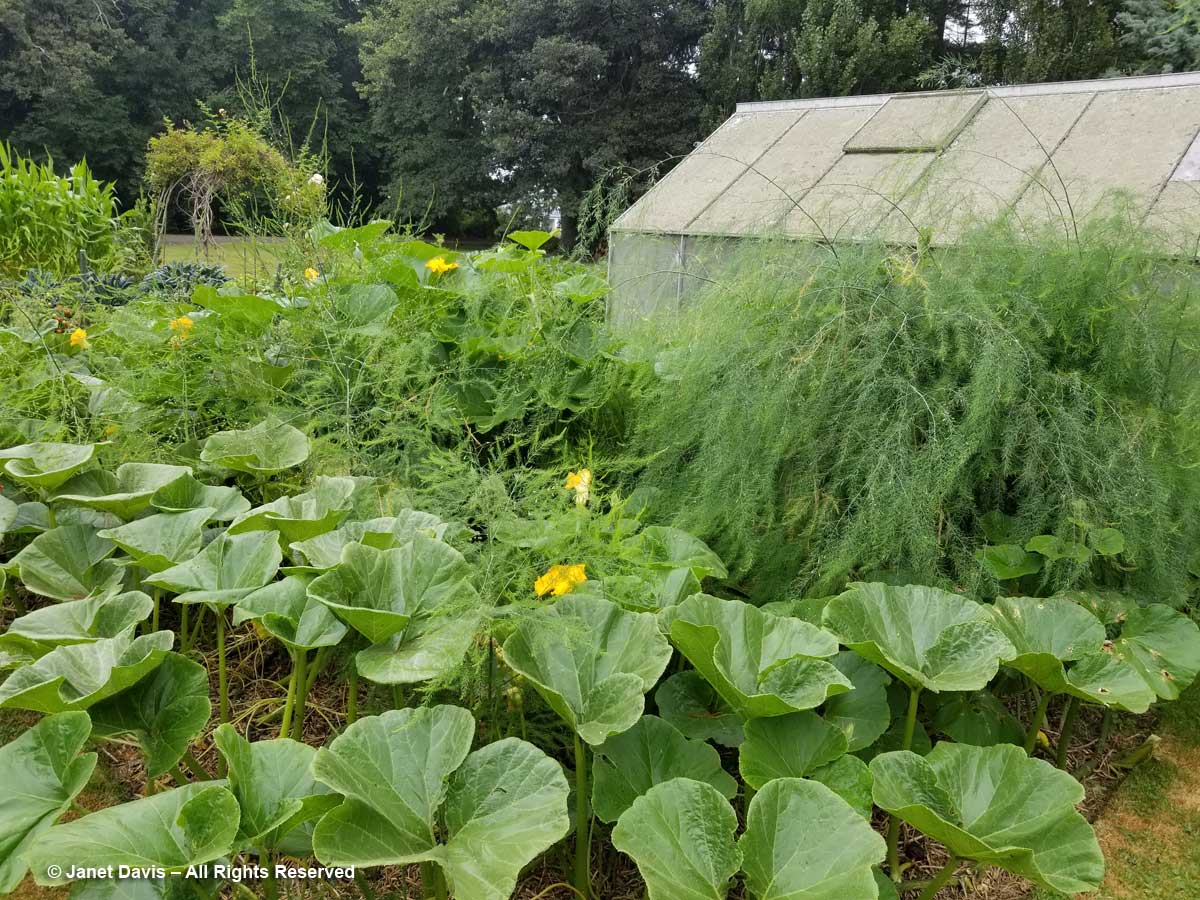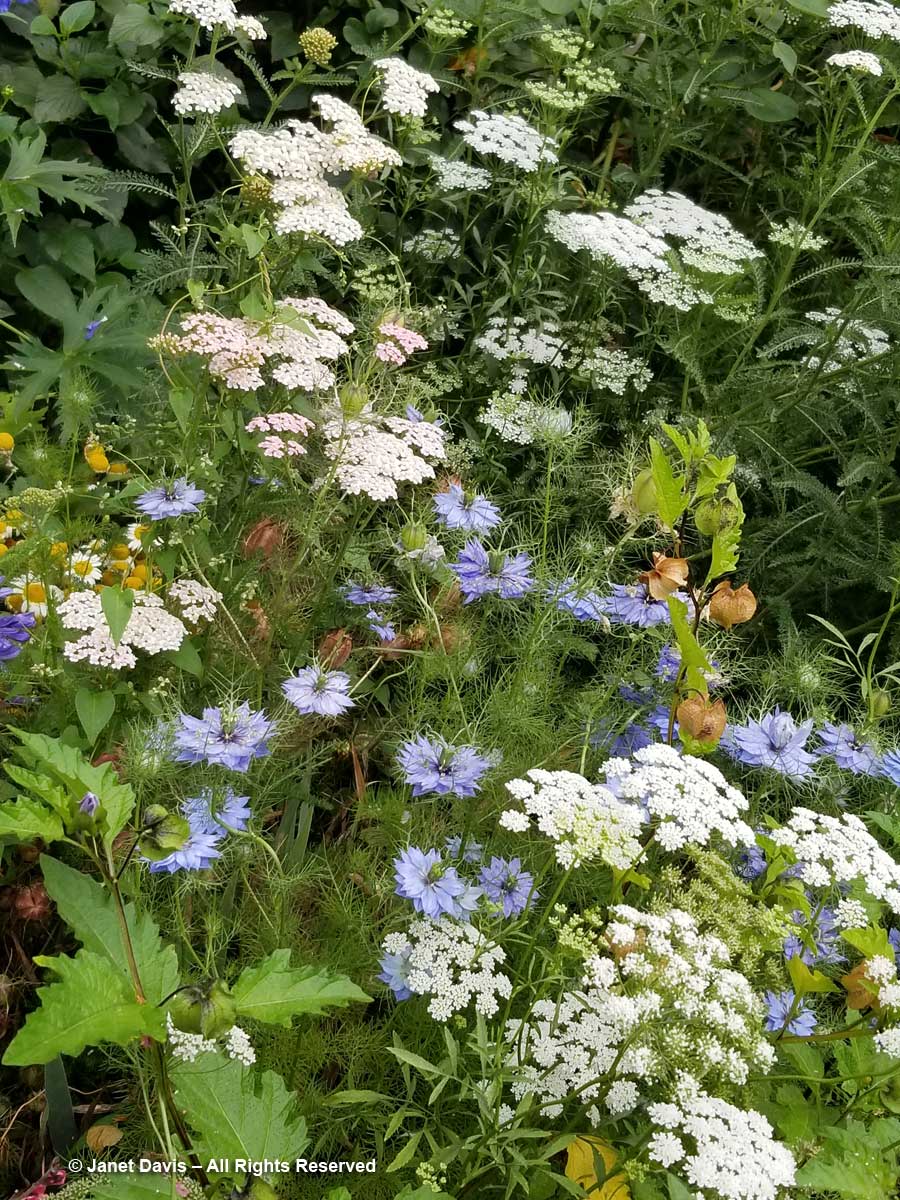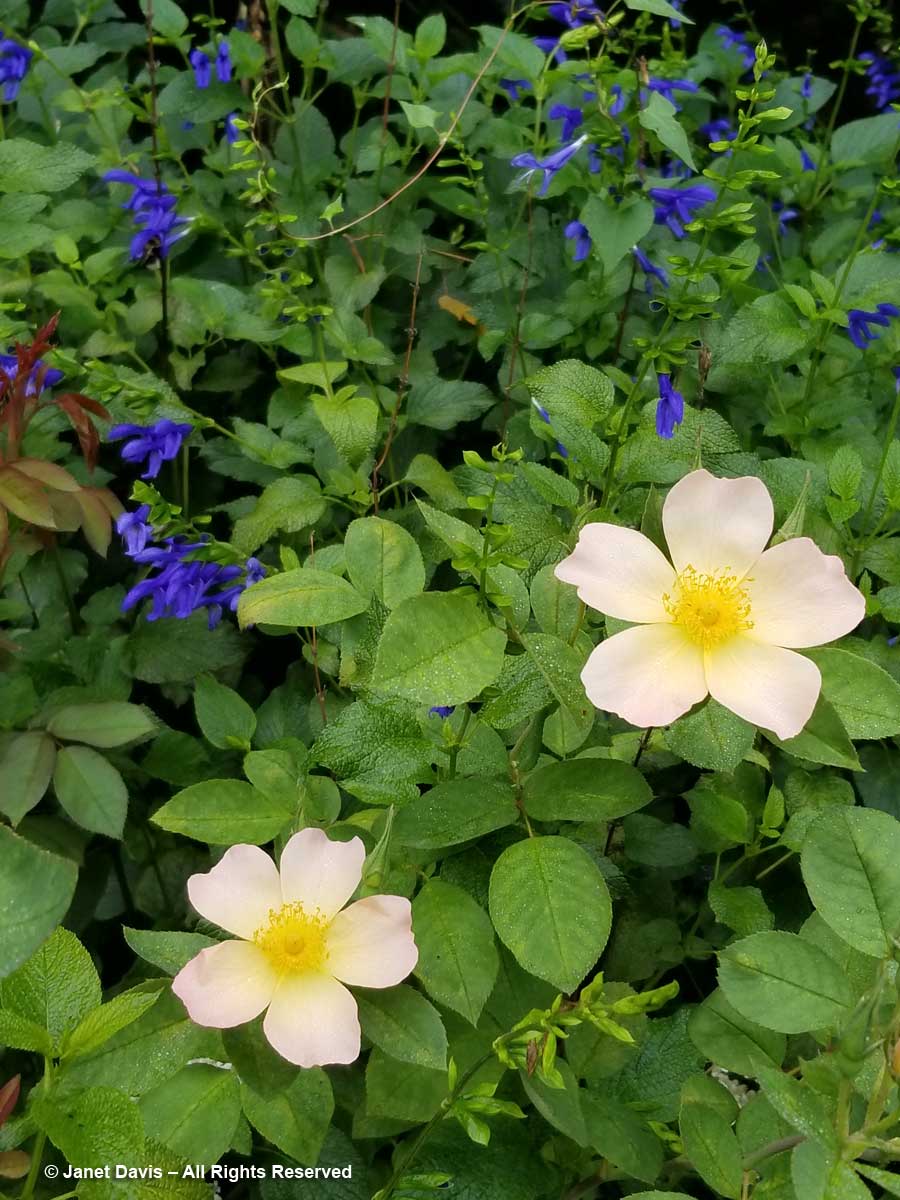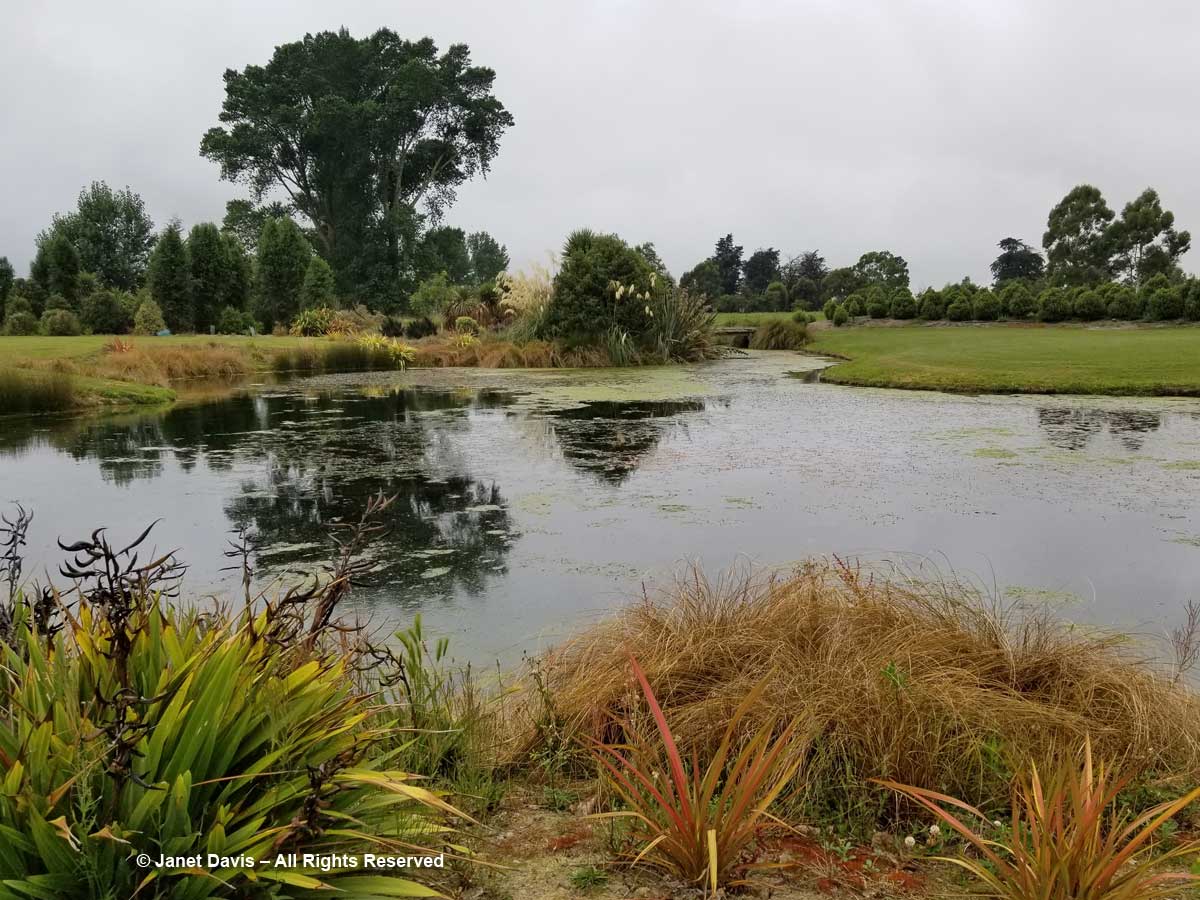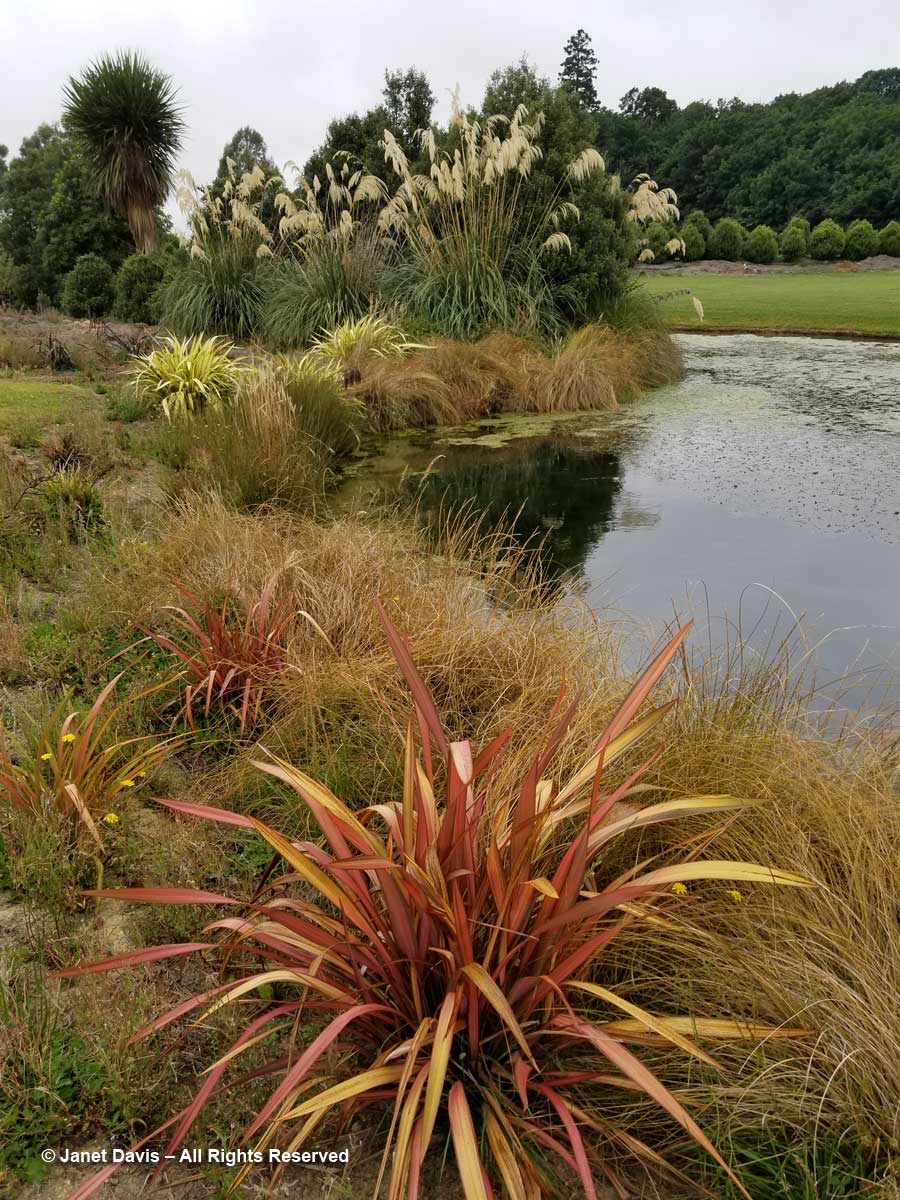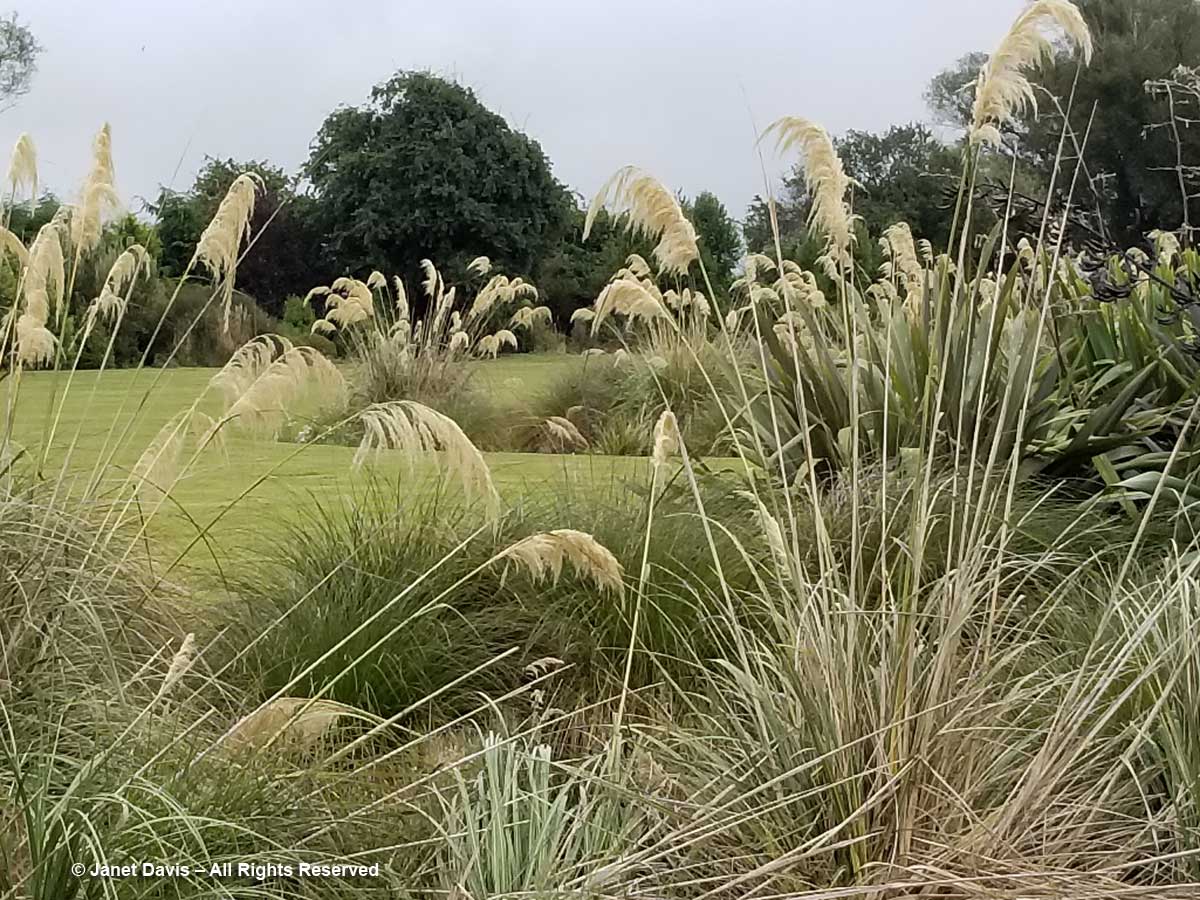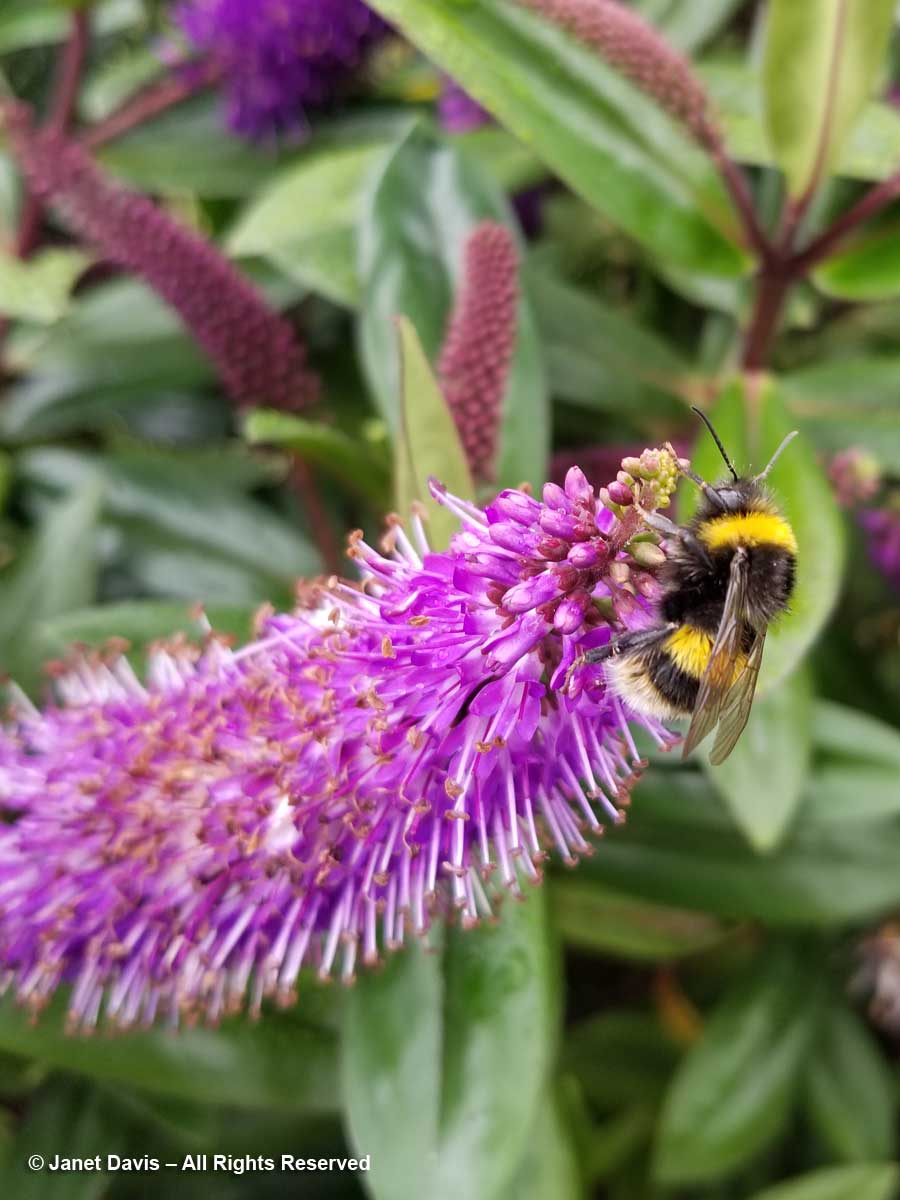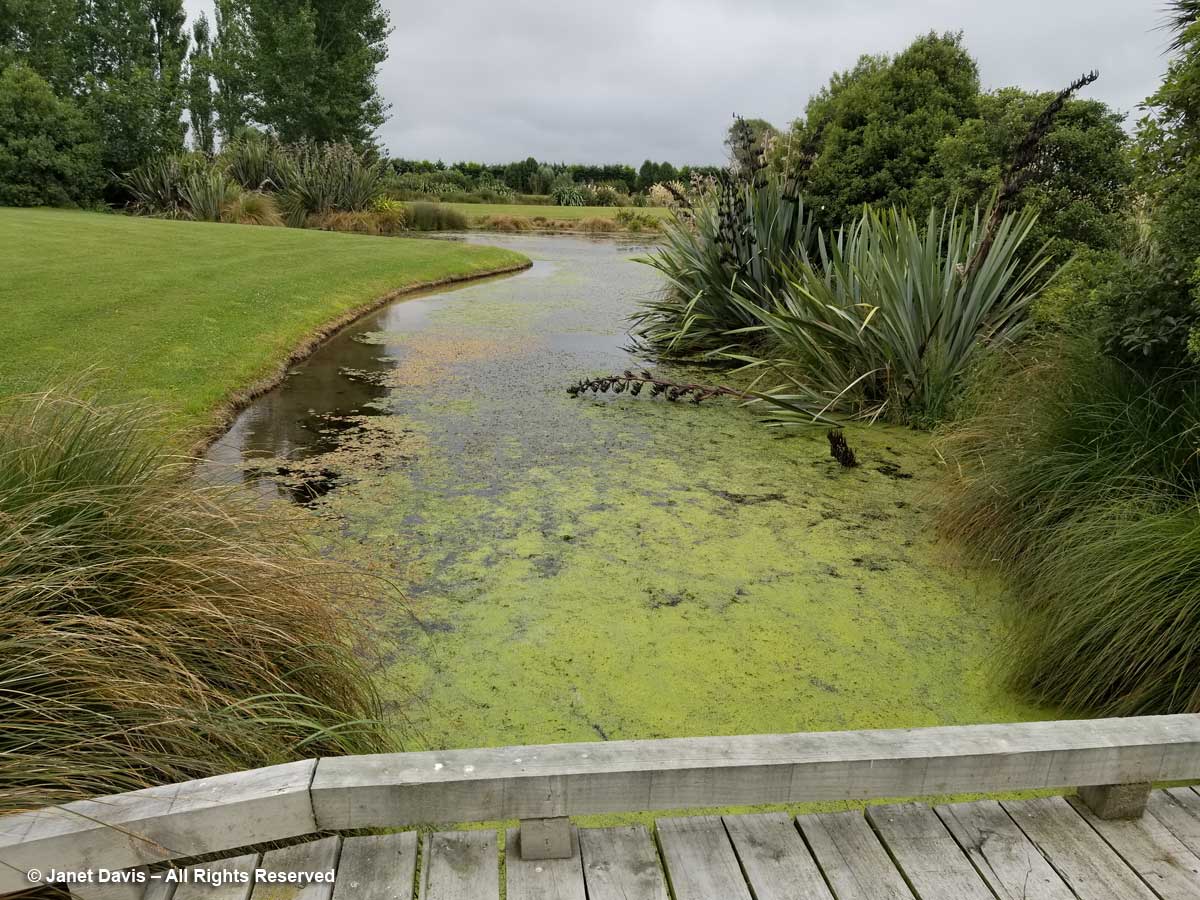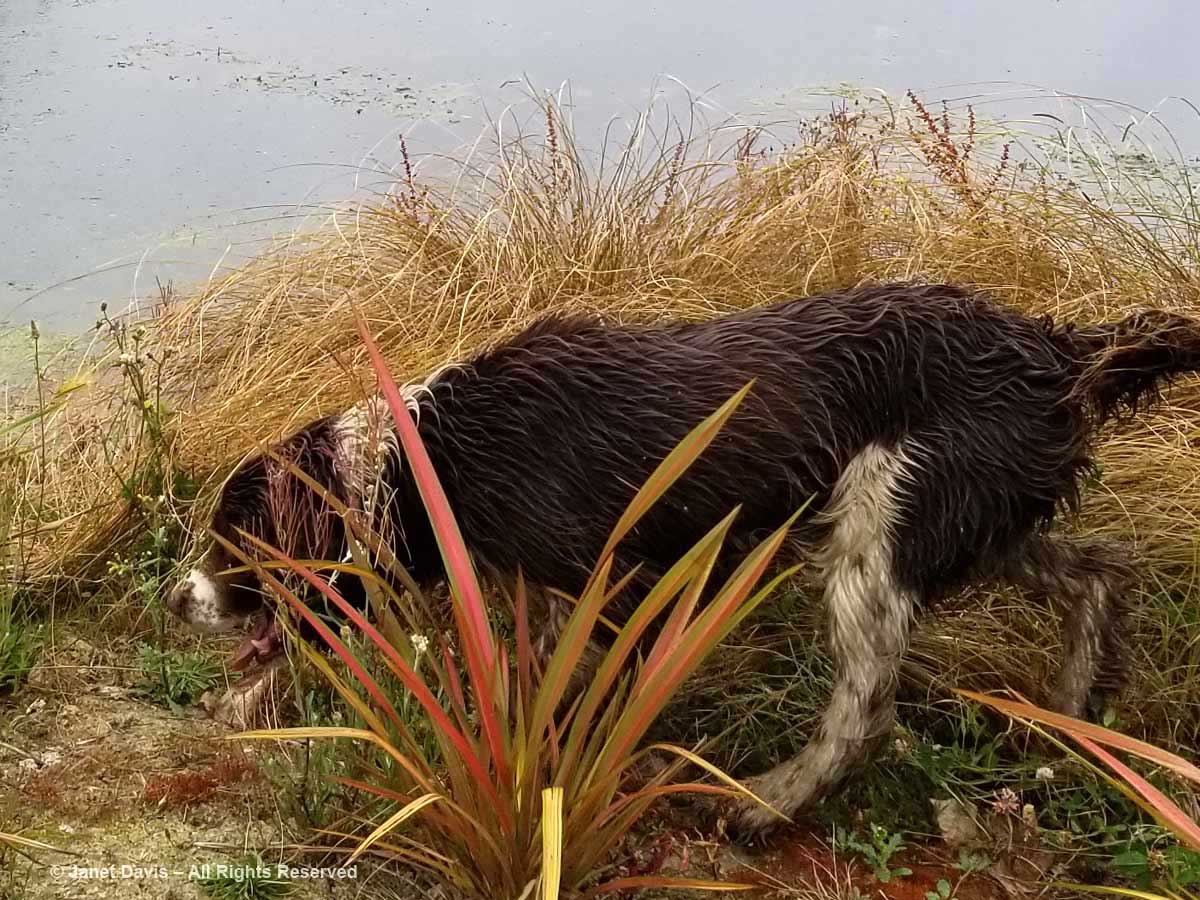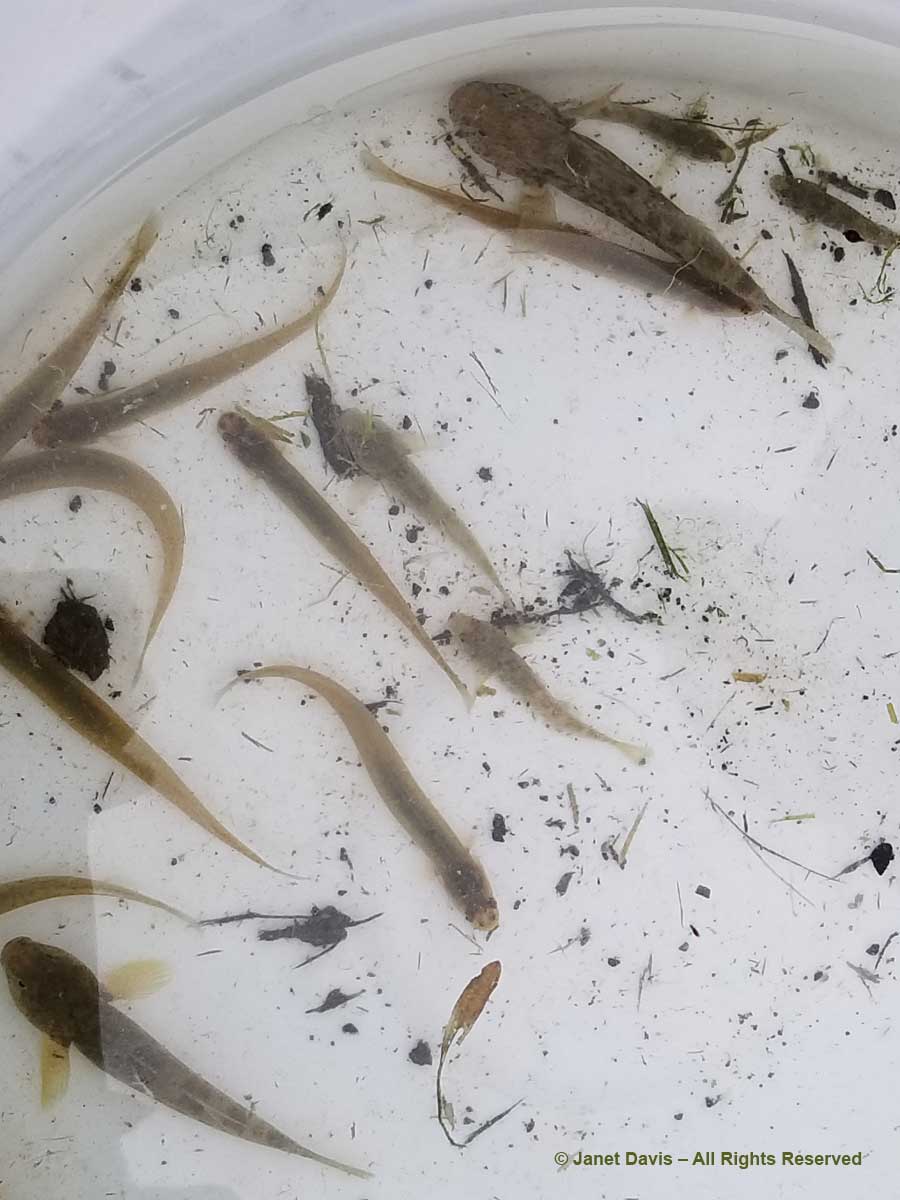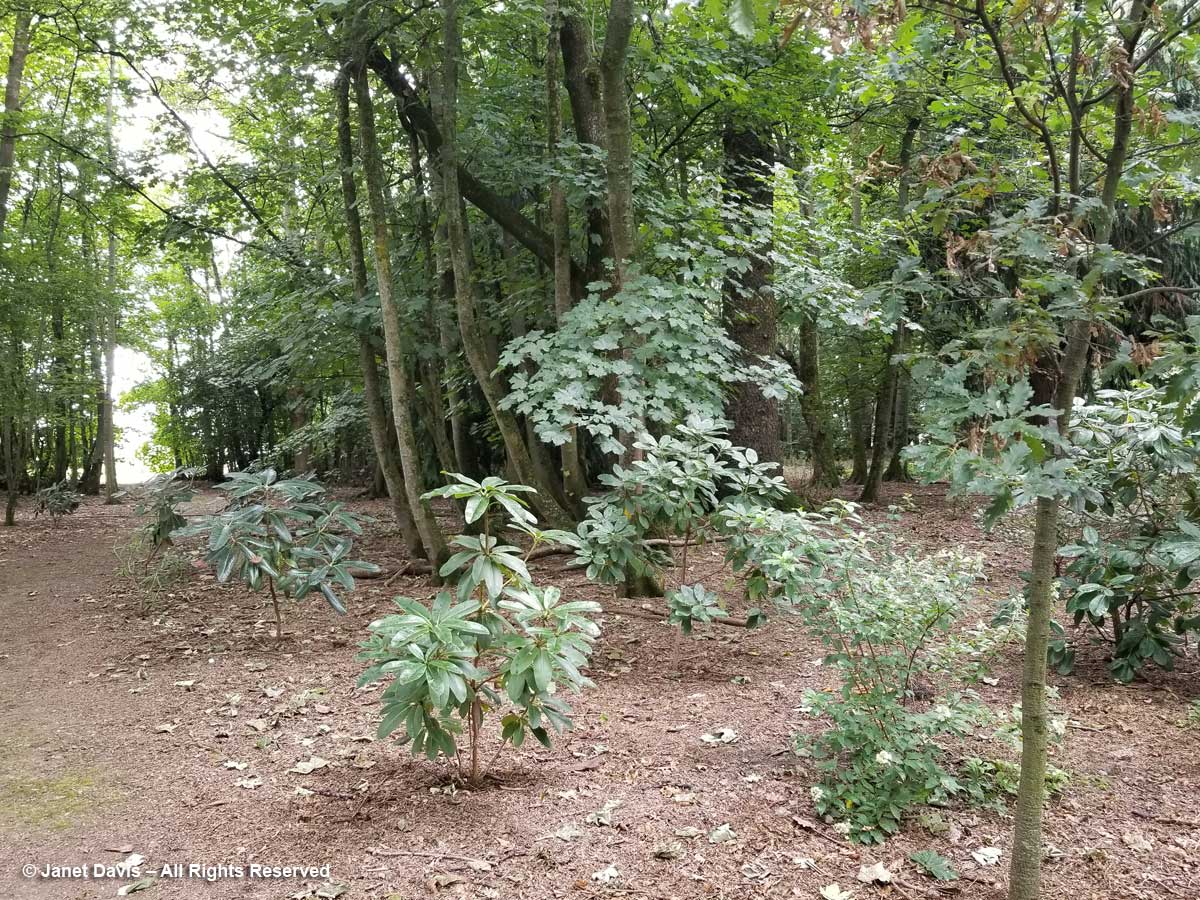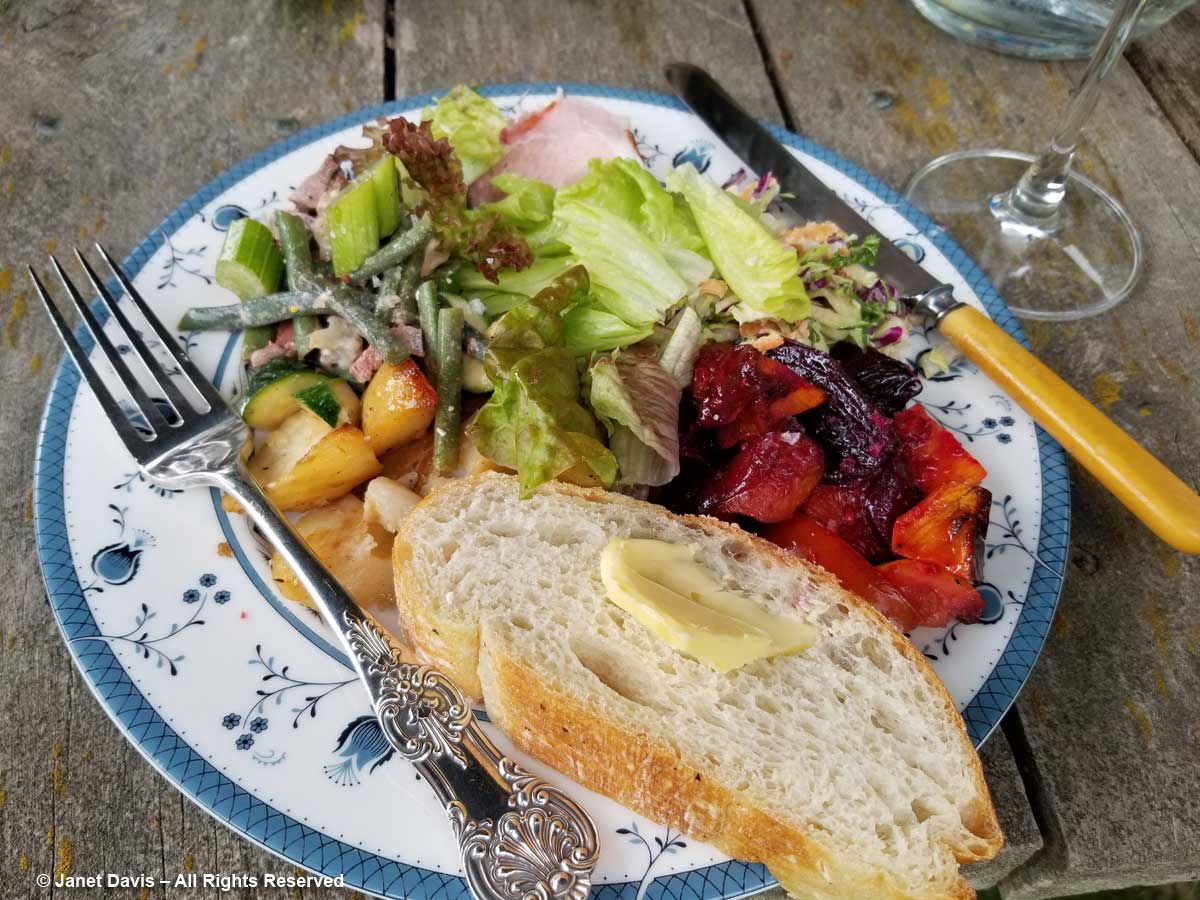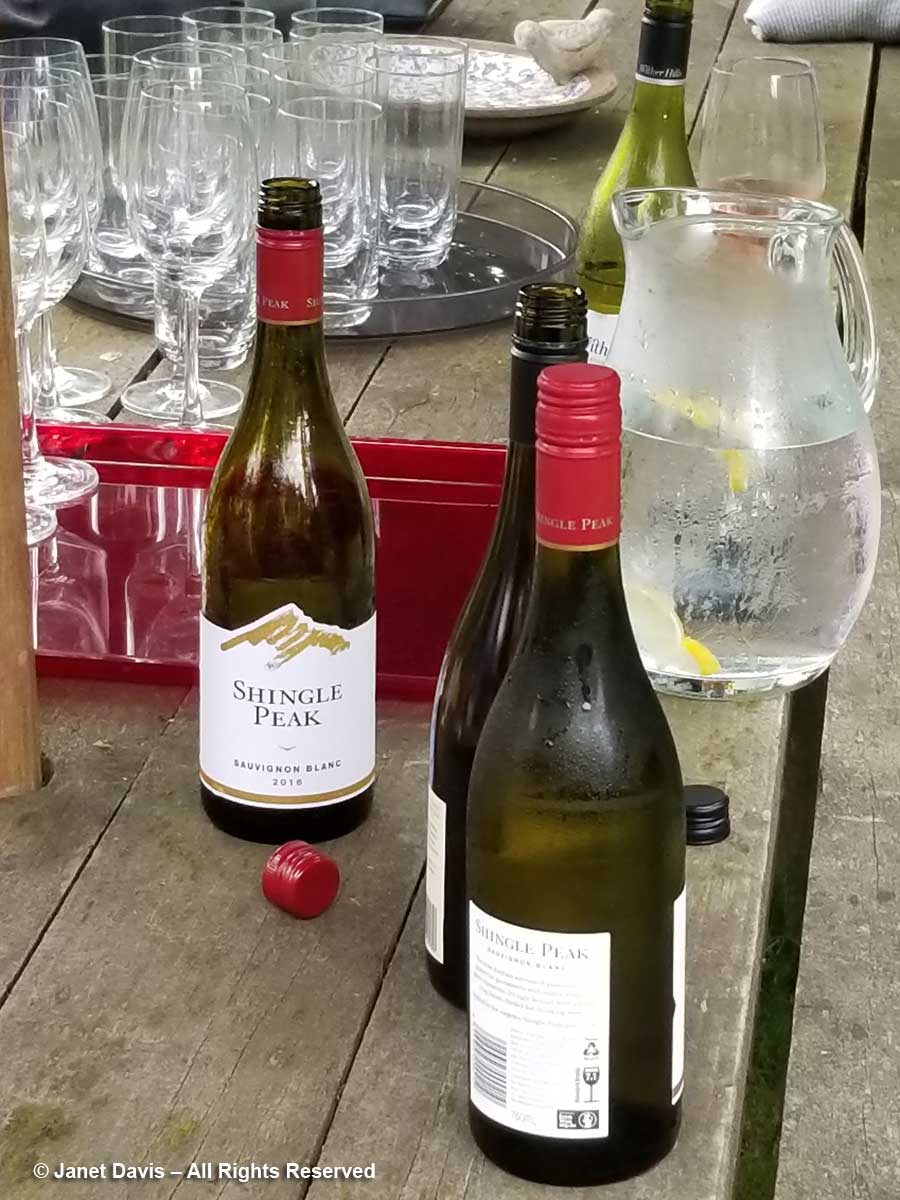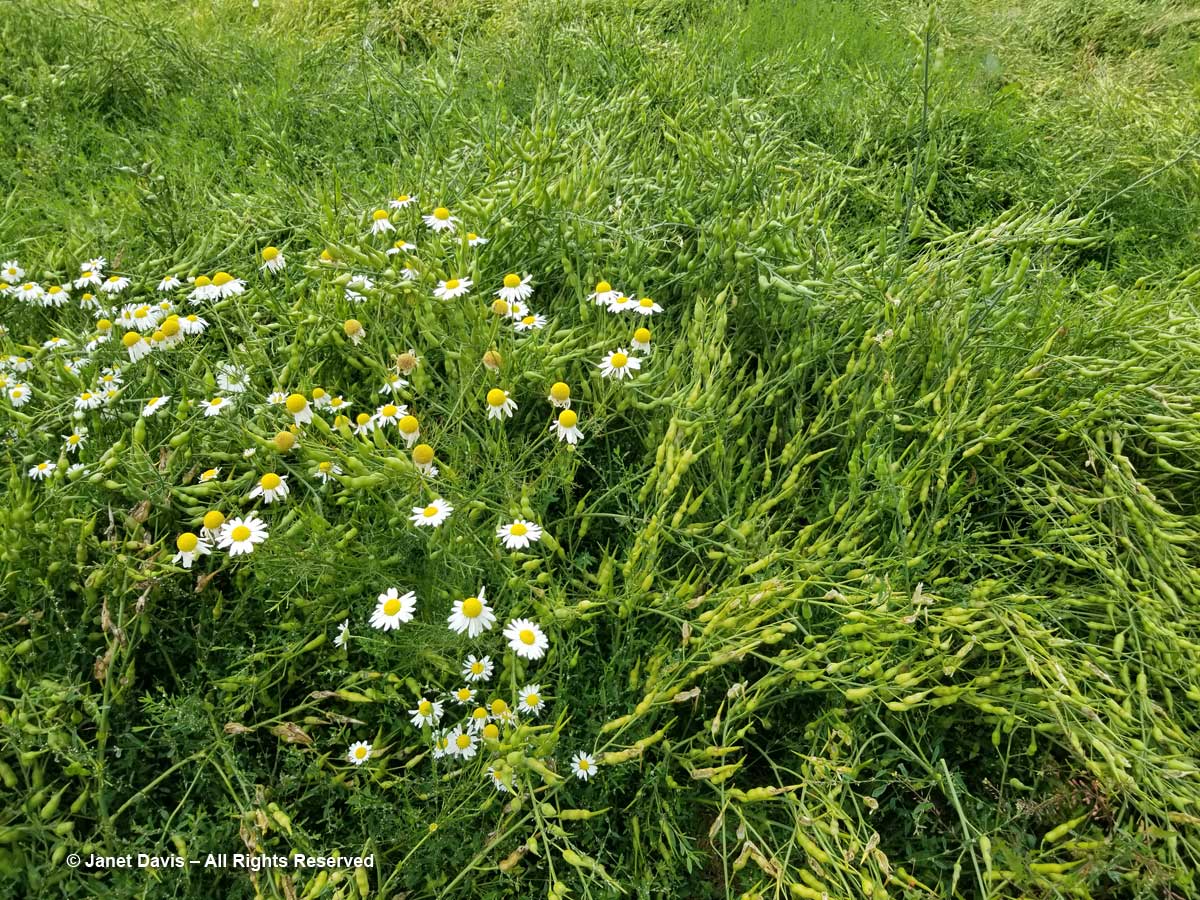Day 14 of our New Zealand tour took us out of Aoraki Mount Cook National Park and down onto the Canterbury Plains with its patchwork of agricultural fields. Here’s a bus window look at the descent.
In late morning we drove into Akaunui Farm Homestead in the countryside near Ashburton. As we walked down the long, hedge-lined driveway, we were greeted politely by the two family dogs.
The brick house was lovely, with its generous verandahs and covered balcony. Built in 1905 for Edward Grigg, a son of one of Canterbury’s pioneering colonial farmers, John Grigg, first president of the New Zealand Agricultural Society and a large-scale sheep and cropping farmer, it was originally part of the Grigg family’s massive Longbeach estate. But it has long been in the family of our host and hostess today, Di and Ian Mackenzie.
Di and Ian, below, share that farming pedigree with their predecessors. Though their grown son now farms Akaunui’s 600 hectares (1500 acres) in vegetable and grain seed and sheep and dairy cattle, Ian has previously served as the national grain and seed chair of the Federated Farmers of New Zealand.
Di Mackenzie does all the gardening on a property whose landscape was designed originally by Alfred William Buxton (1872-1950). As the New Zealand government historical entry says, “Buxton’s landscape designs were typified by curved entrance drives, perimeter plantings of forest trees, water.…” We saw that all here at Akaunui, the curved entrance drive and perimeter plantings of forest trees. ……
…… ….. a sinuous pond….
….. and a bog garden……
……with Gunnera manicata, among many other choice plants.
The pond curved around past Di’s vast collection of trees and shrubs, including bottlebrush buckeye (Aesculus parviflora) …..
…..and presented the most spectacular reflective view of the house.
There was a lovely tranquility about this pond, with its little rowboat.
I liked this combination, of a hybrid of native Phormium tenax with Verbena bonariensis.
Many of the specimen trees are very old, like this southern magnolia (M. grandiflora)…..
….. which was still putting out shimmering blossoms in mid-summer.
The lawns alone take Di Mackenzie 15 hours a week on her sitting mower, and clearly they had just been done before our arrival.
The beds around the house feature roses and perennials…..
…. and Di’s exquisite sense of colour is on display here, like this buff peach rose with Phygelius capensis.
There is a sweet parterre along an outbuilding wall.
Rain showers started as I made my way from the lovely swimming pool……
……(Canterbury’s summers can be hot and very dry)…..
…….. to the enclosed garden……..
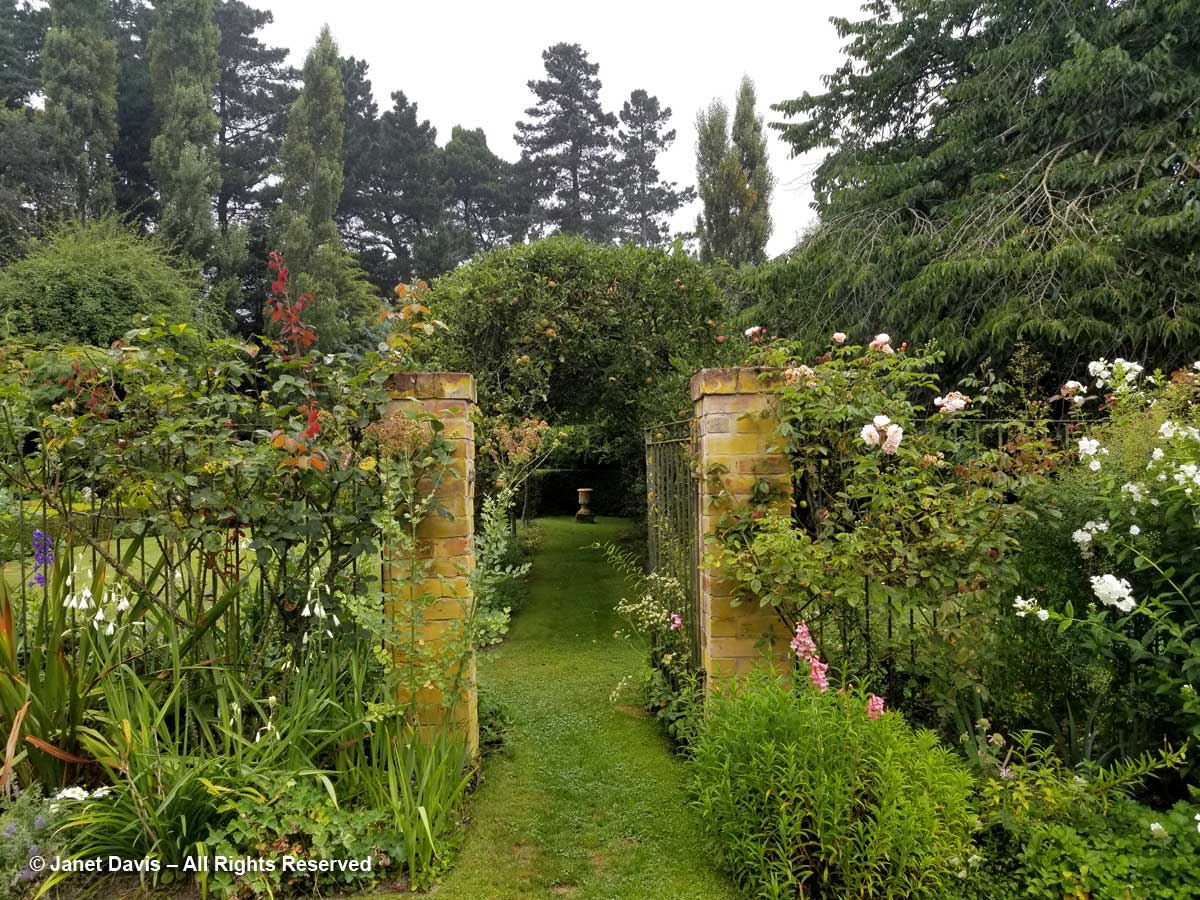
….with its espaliered apple allée and stunning focal point.
Outside, there were pears…..
….. and peaches…..
…..and figs……
……and more apples.
Di’s vegetable garden produces an abundance of produce…..
……which she uses for family meals. What’s left over gets preserved for winter.
I loved this flower border, with its pretty white-and-blue theme including Ammi majus and love-in-a-mist (Nigella damascena).
And I liked the way Di mixes perennials with roses, making the roses earn their keep instead of segregating them in a rose garden.
We were walked up to the newest part of the garden: the 4 hectare (10 acre) native-rich designed wetland. Paradoxically, when John Grigg bought his 32,000 acre estate here in 1864, the property was said to be mostly “impassable swamp”. But for Di and Ian, turning part of it back into a designed wetland with a meandering, marshy swale……
….. bordered by native flaxes (and also some colourful Phormium tenax cultivars, below) and grasses…….
….. like Cortaderia richardsonii, a New Zealand cousin to pampas grass…….
…. and native hebe,below, with a foraging bumble bee,…….
…. offered more than an embrace of modern ecological sensibilities. There are also family golf matches in this area, where the water hazards are clearly abundant.
Perhaps the dog has been trained to retrieve lost balls? Or maybe he just likes a dip.
That bridge above, in fact, was where Ian Mackenzie showed us something he’s very proud of, something that for him seems to have made the return of the wetland all worth it. Have a look at these, below. They’re Canterbury mudfish (Neochanna burrowsius), an amphibious species that can survive long periods without water by burrowing into the mud. And they’ve been making a big comeback here at Akaunui.
We returned to the picnic tables via the previously overgrown woodland, which Di has started to clear in order to plant rhododendrons and lots of shade-loving plants.
We were offered a luscious home-cooked lunch with delicious beets and greens, courtesy of Di’s garden. Oh, and the best rhubarb cake ever!
And there was a little wine (actually a lot of wine!)
As we made our departure from this beautiful farm, I stopped to watch the dogs’ tails move through a big field of something green. Looking closer, I realized it was another of the Mackenzie family businesses: radishes on their way to ripening seed. I read later that New Zealand supplies almost 50% of the world’s hybrid radish, carrot and beet seed. Next time you slice a radish for a summer salad, consider for a moment that it might have started its journey in Ian & Di Mackenzie’s pretty field in Canterbury.

